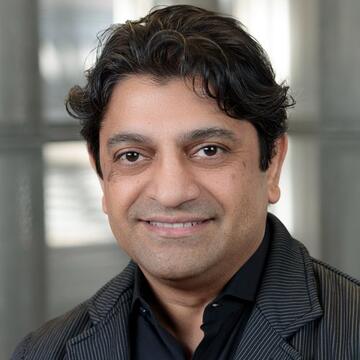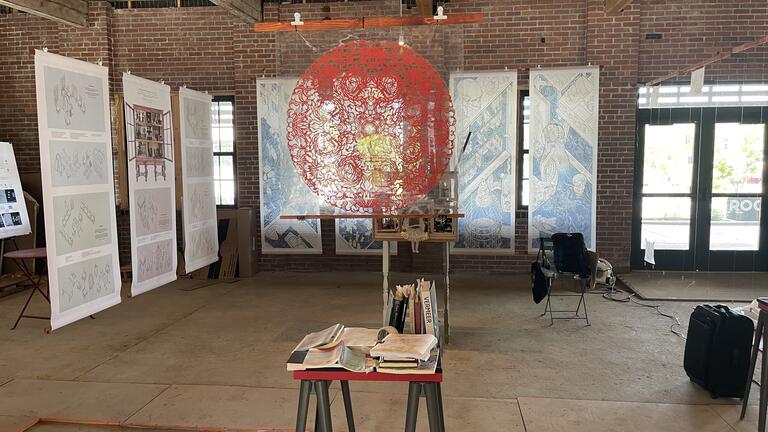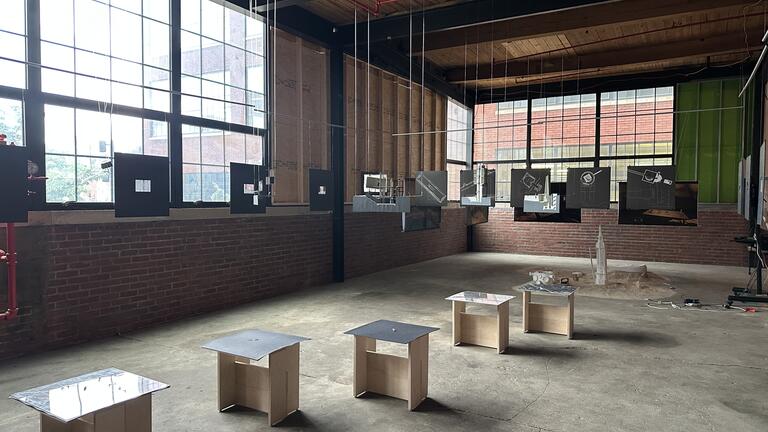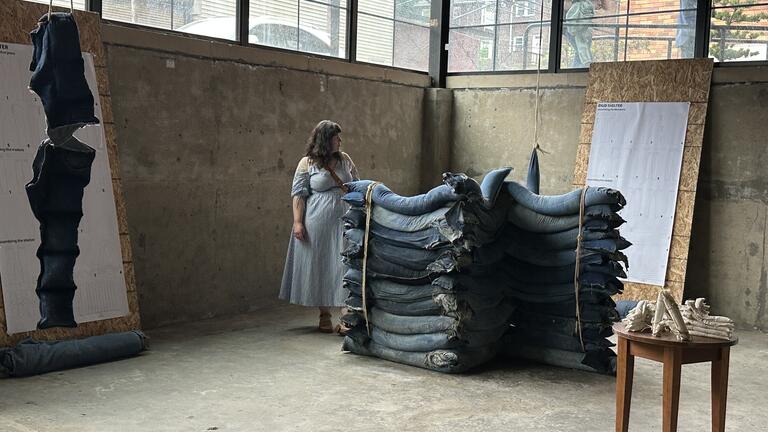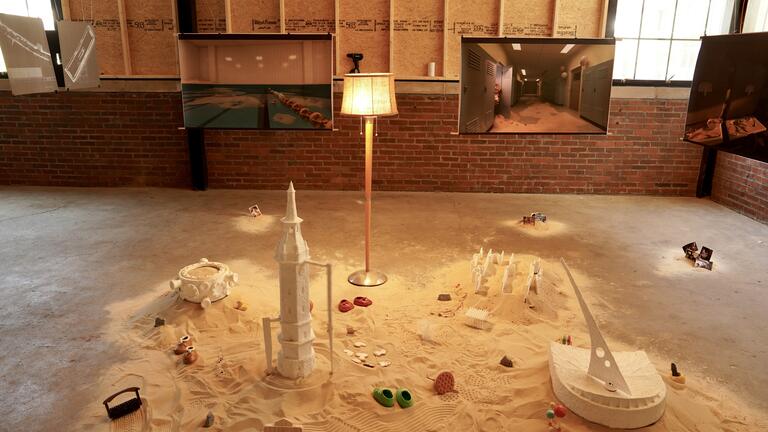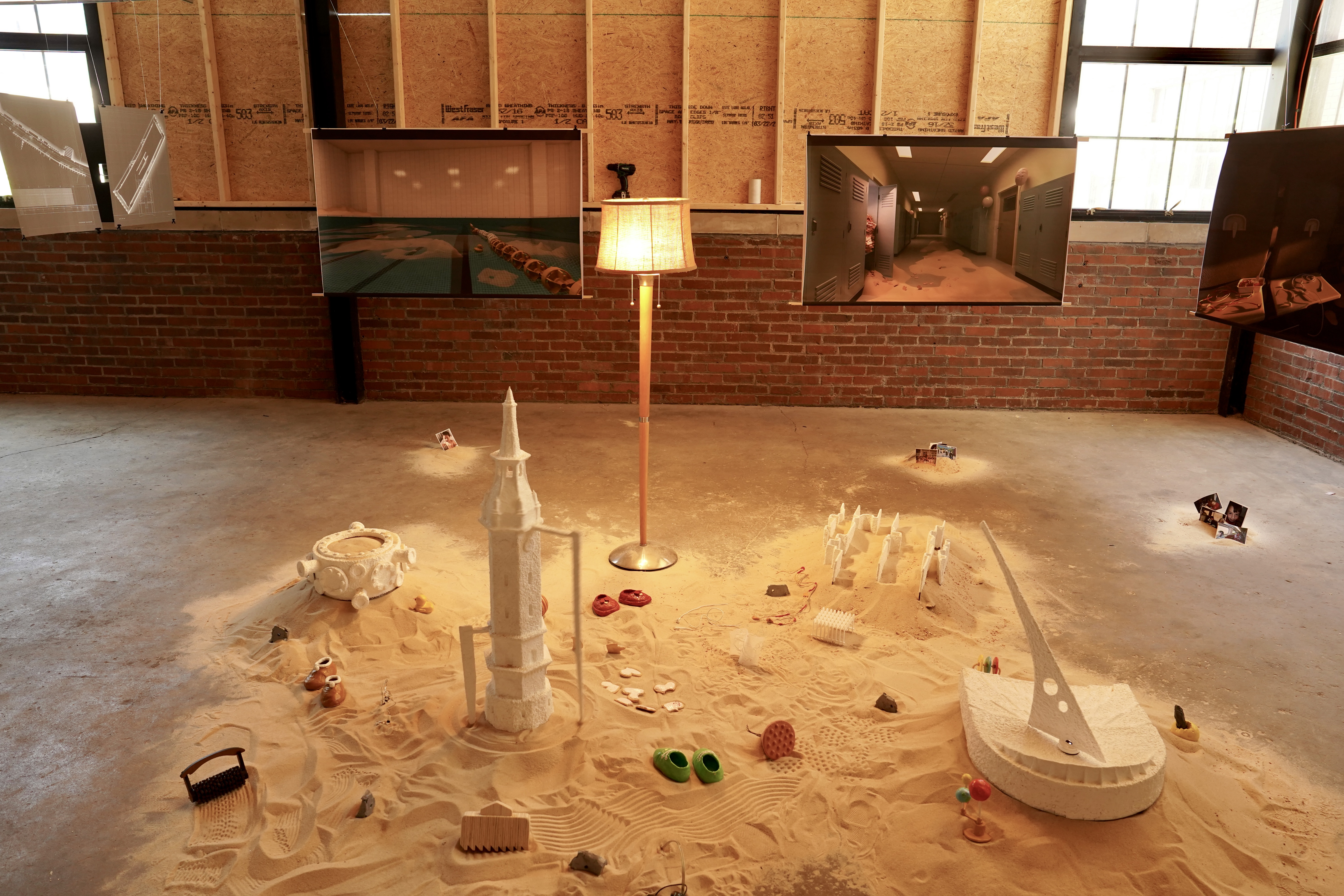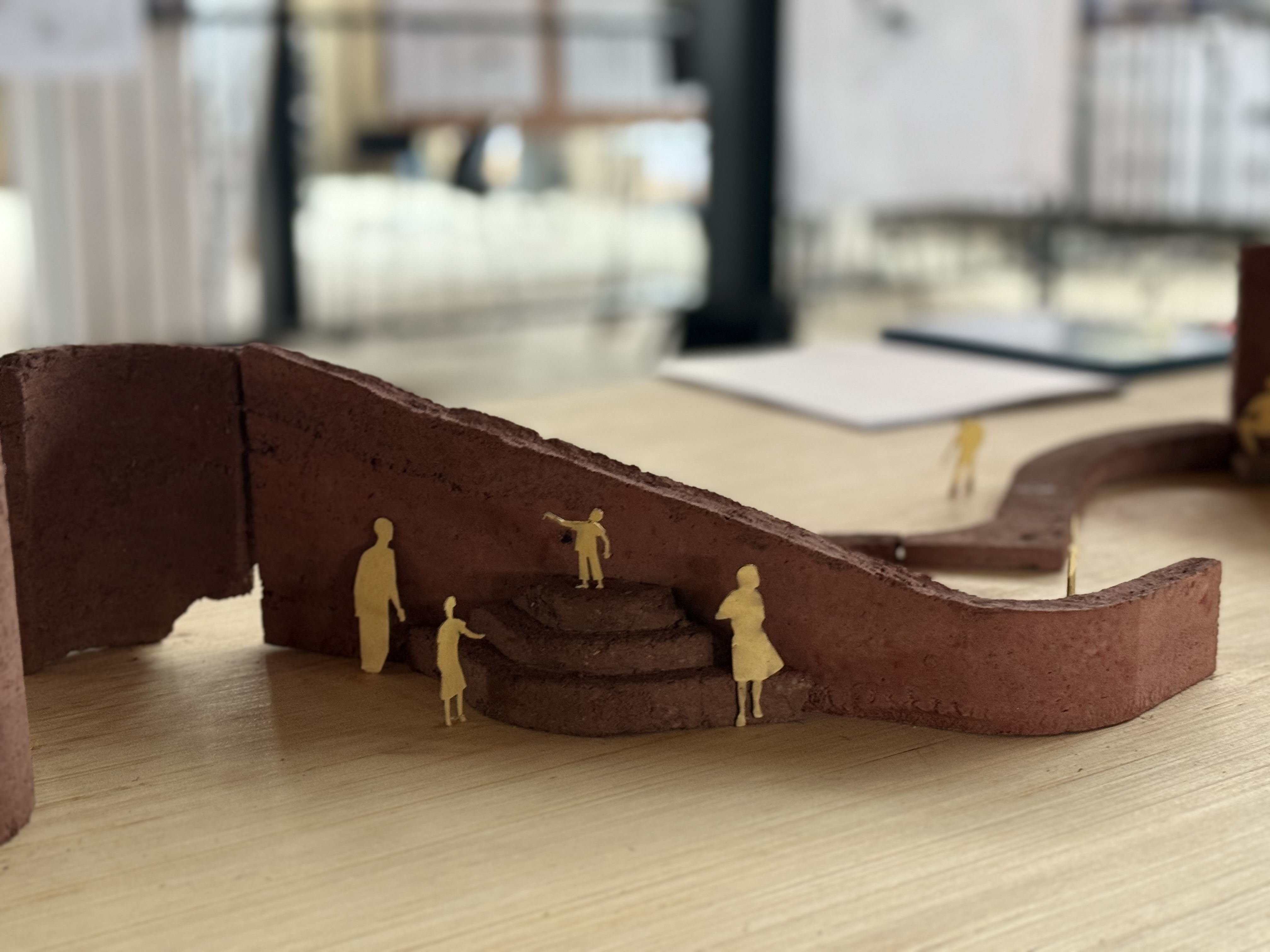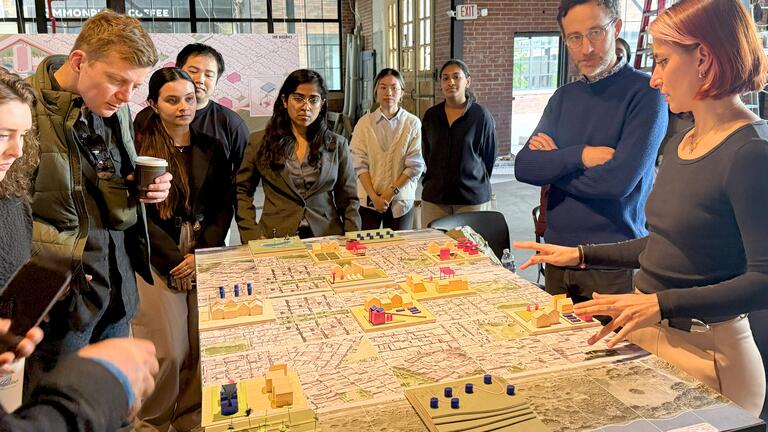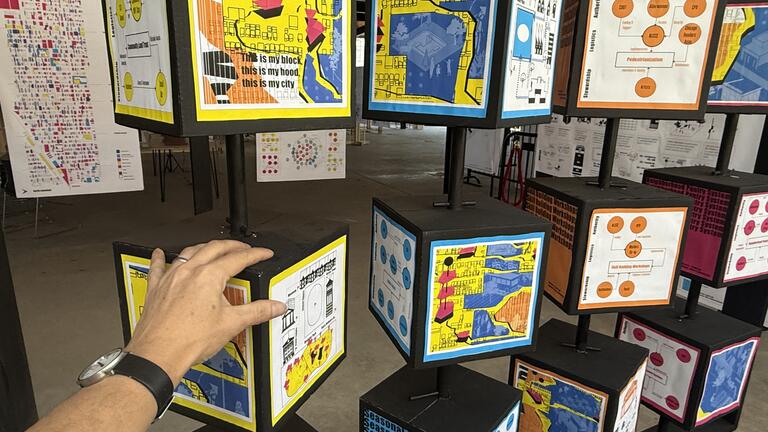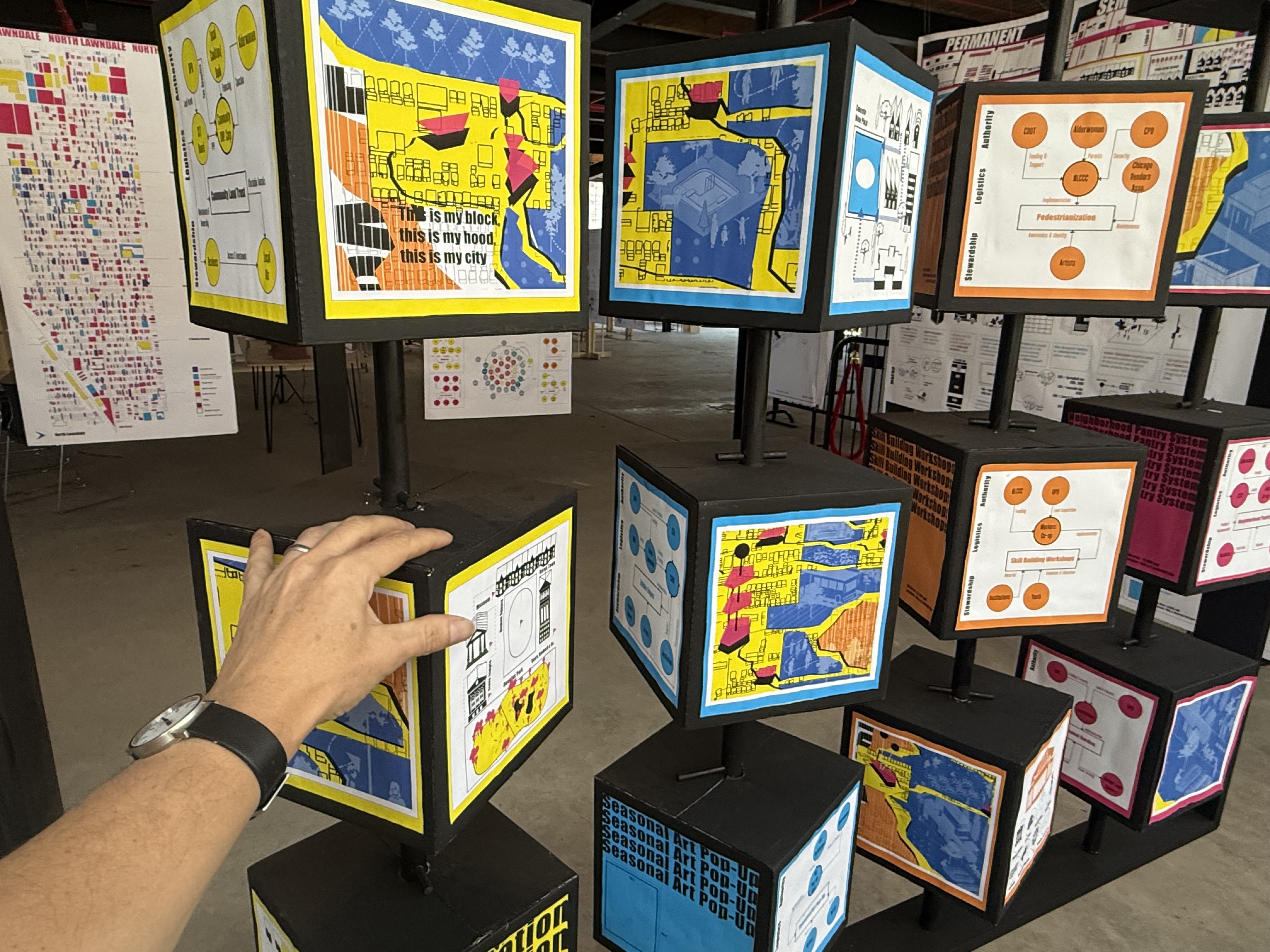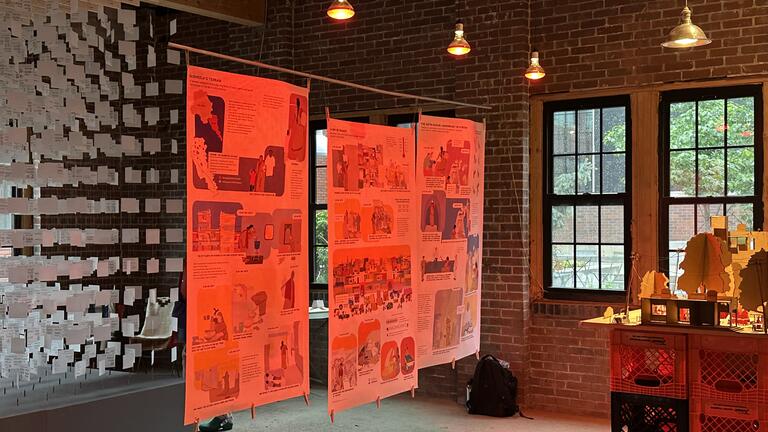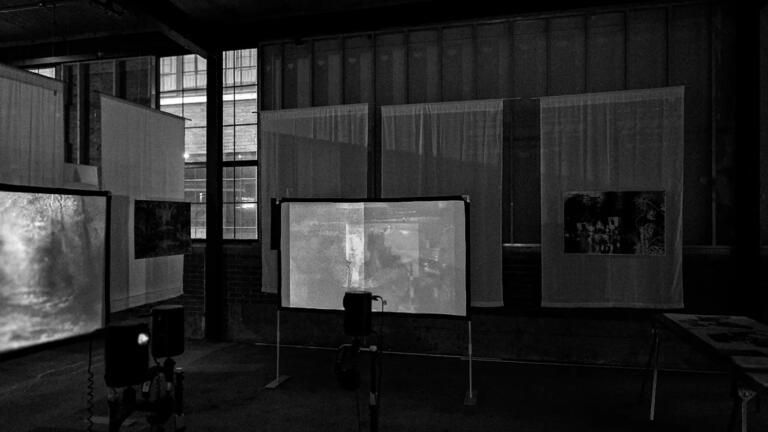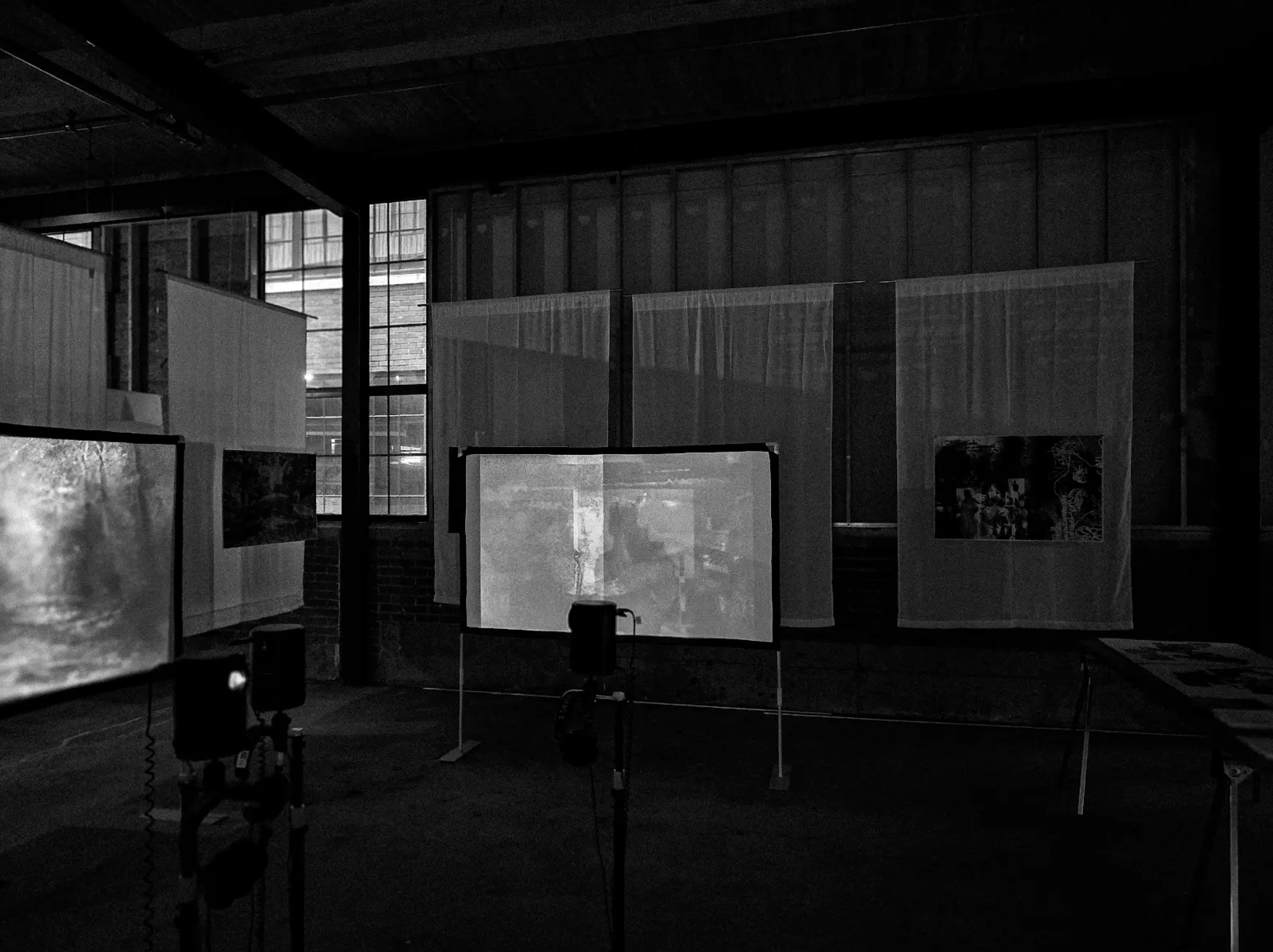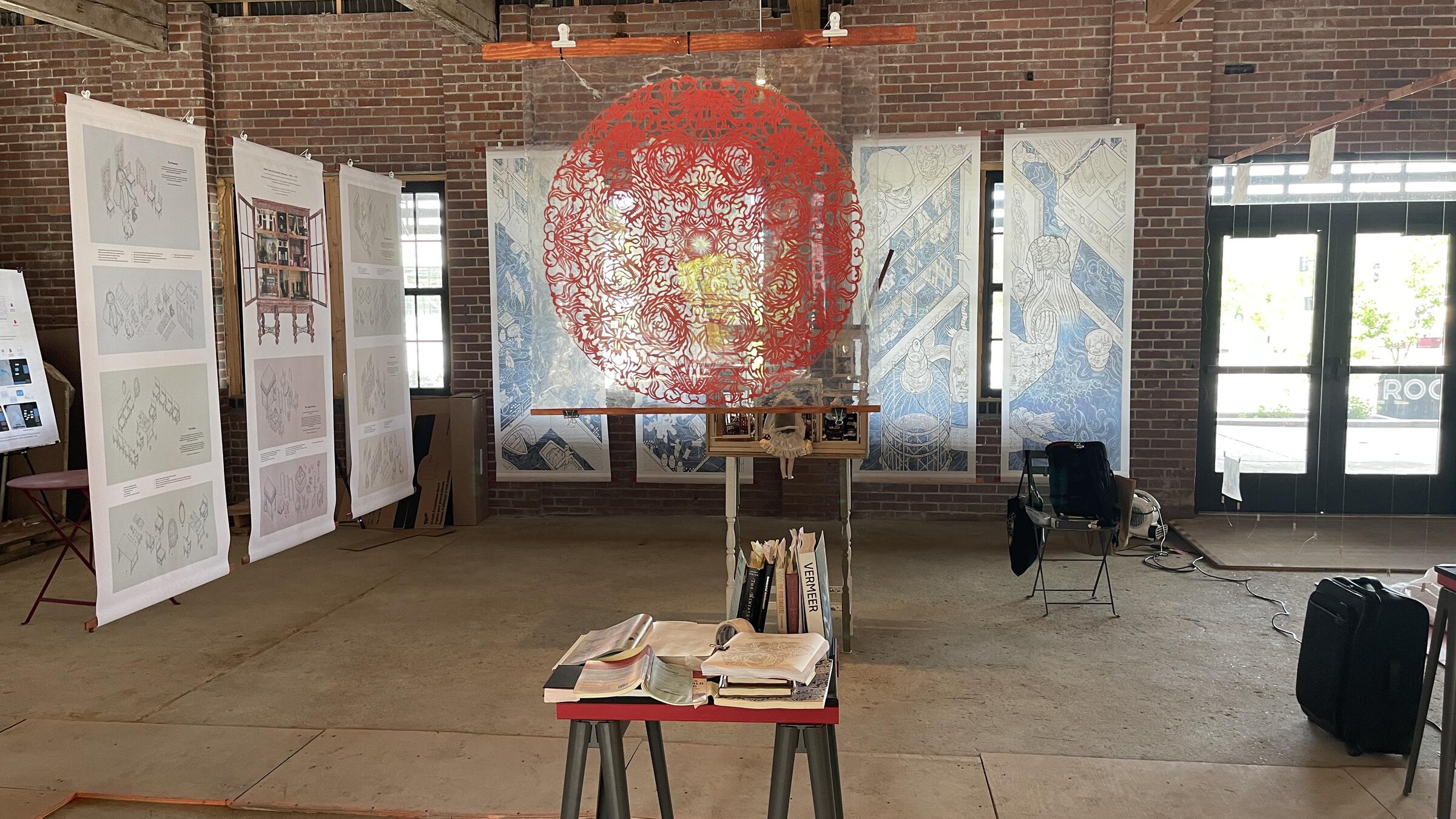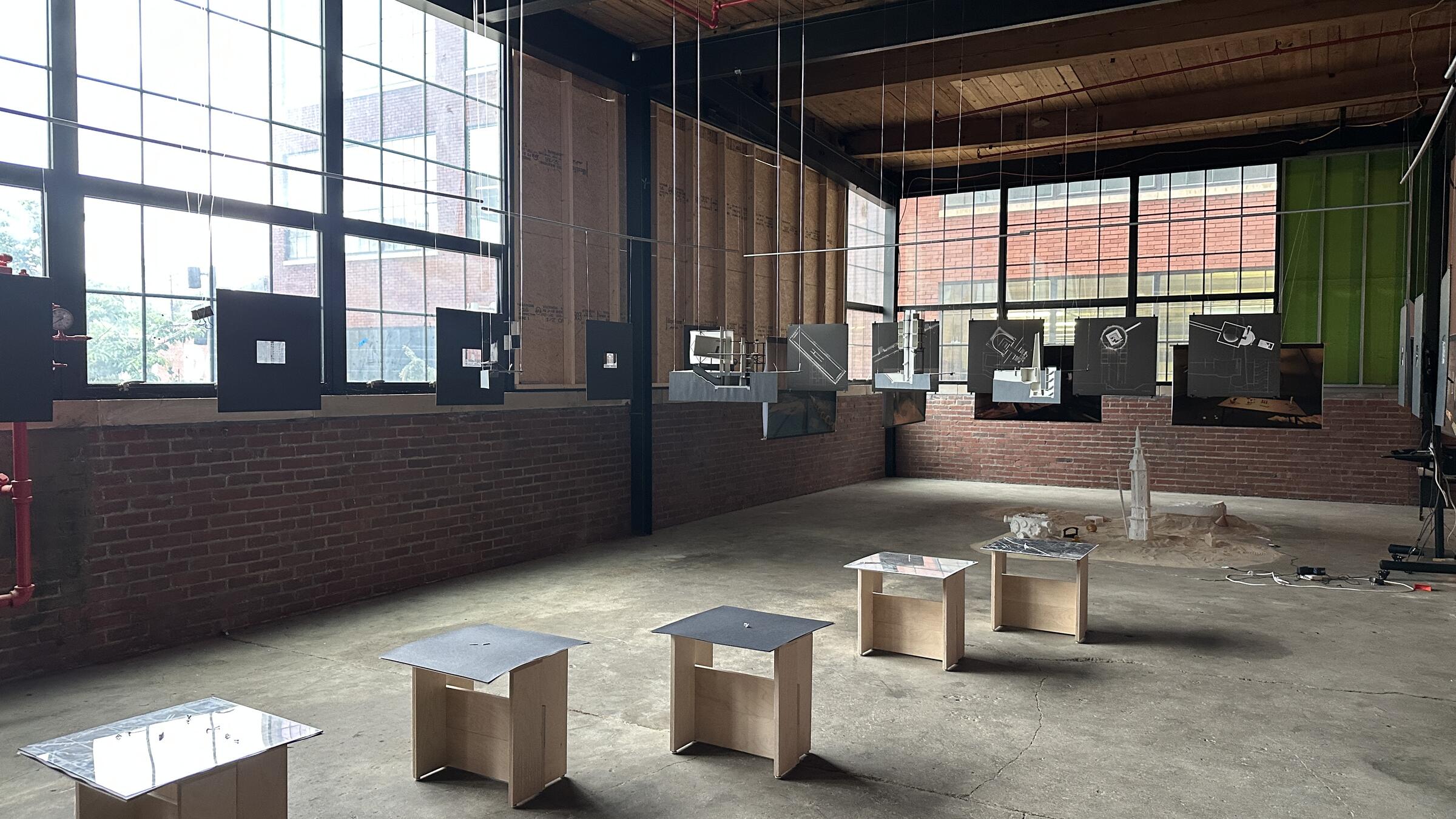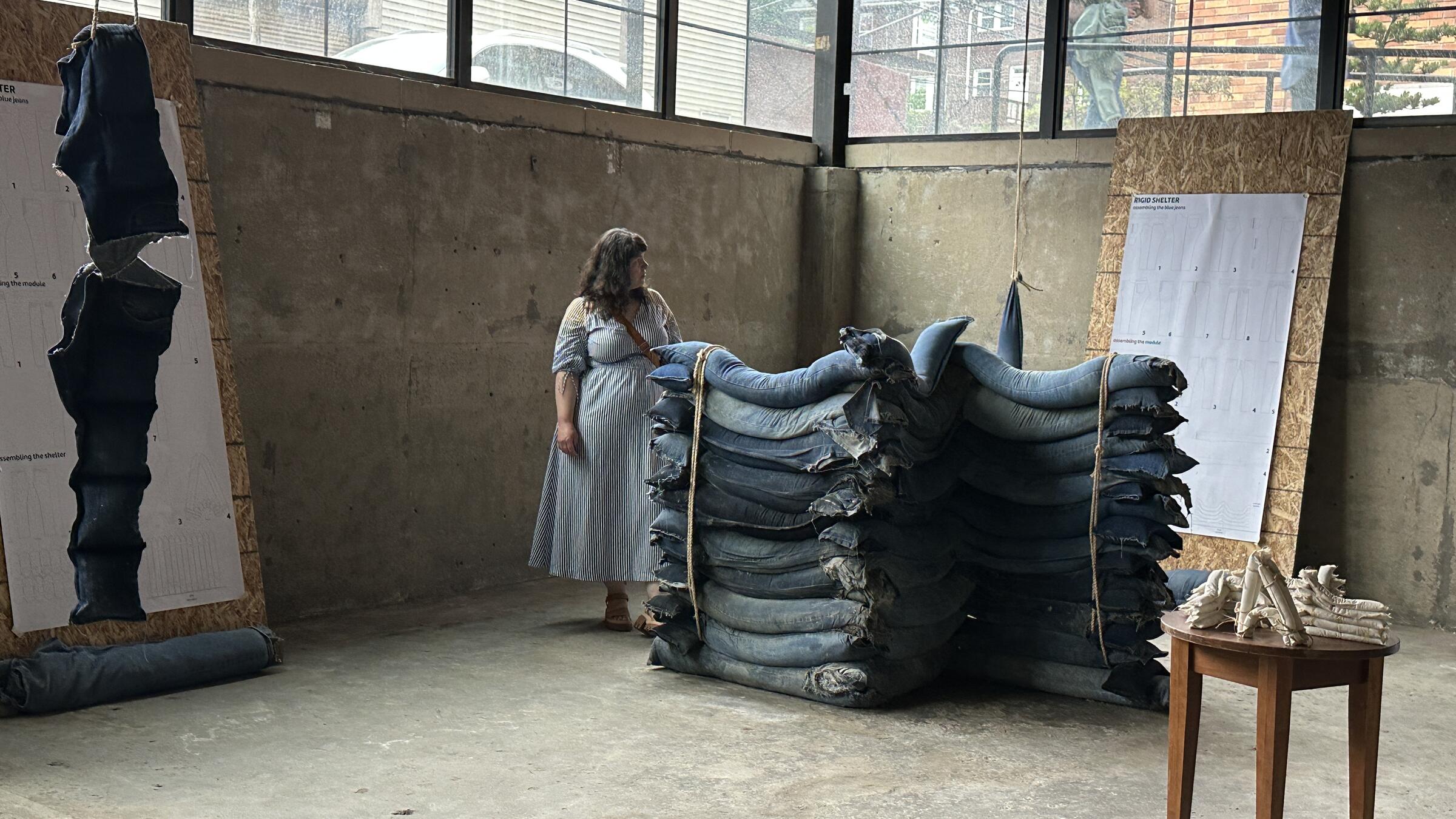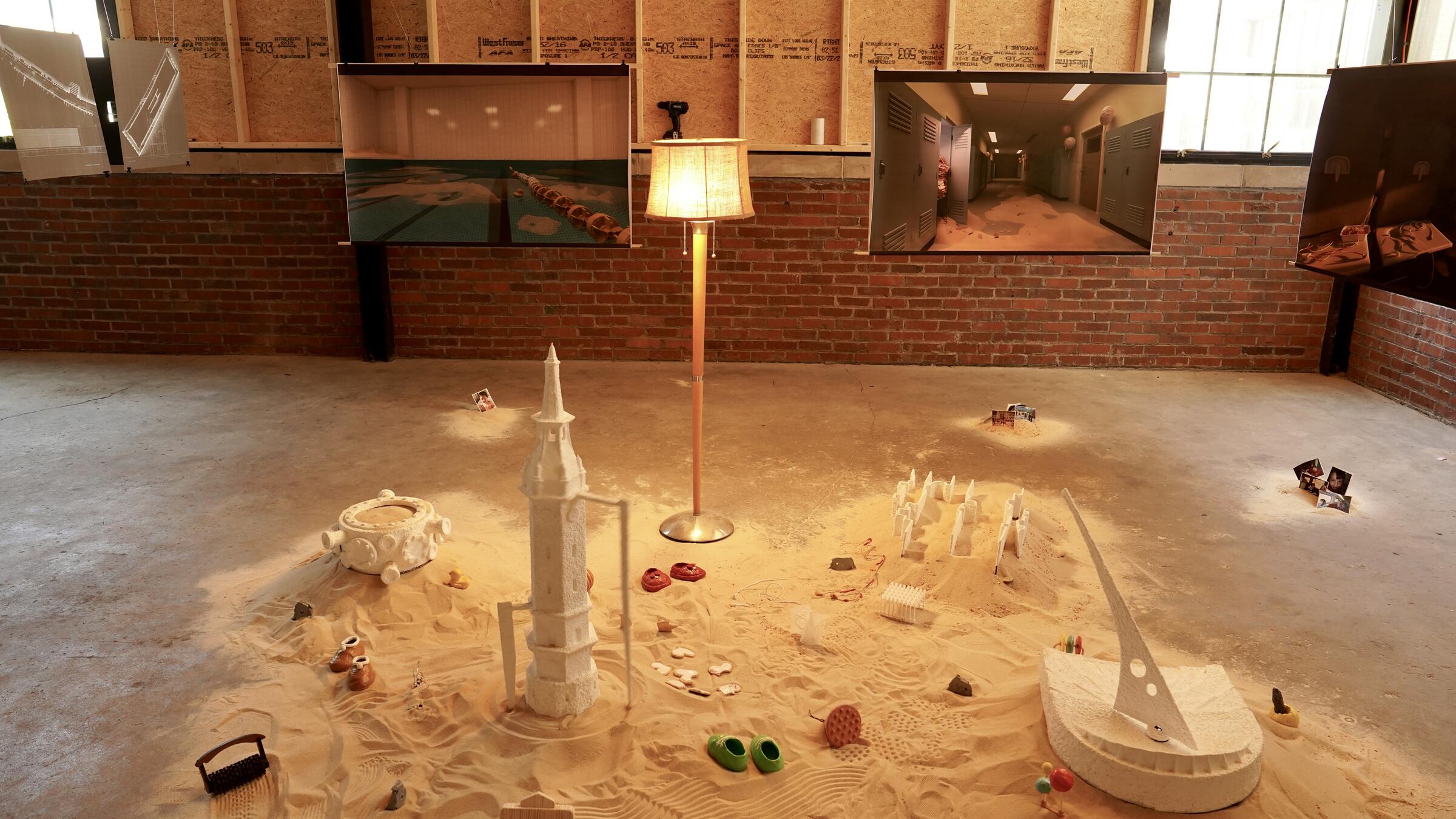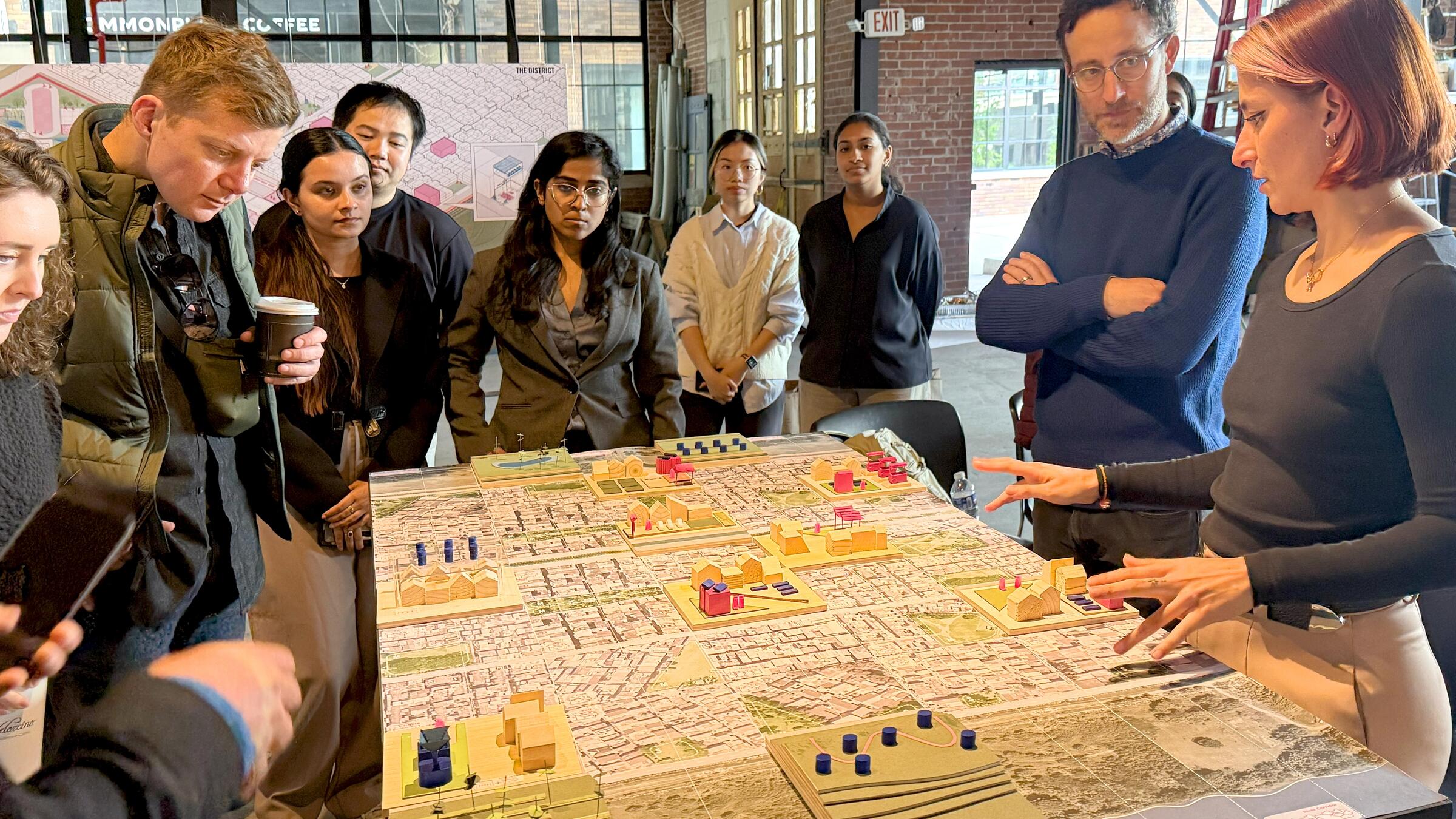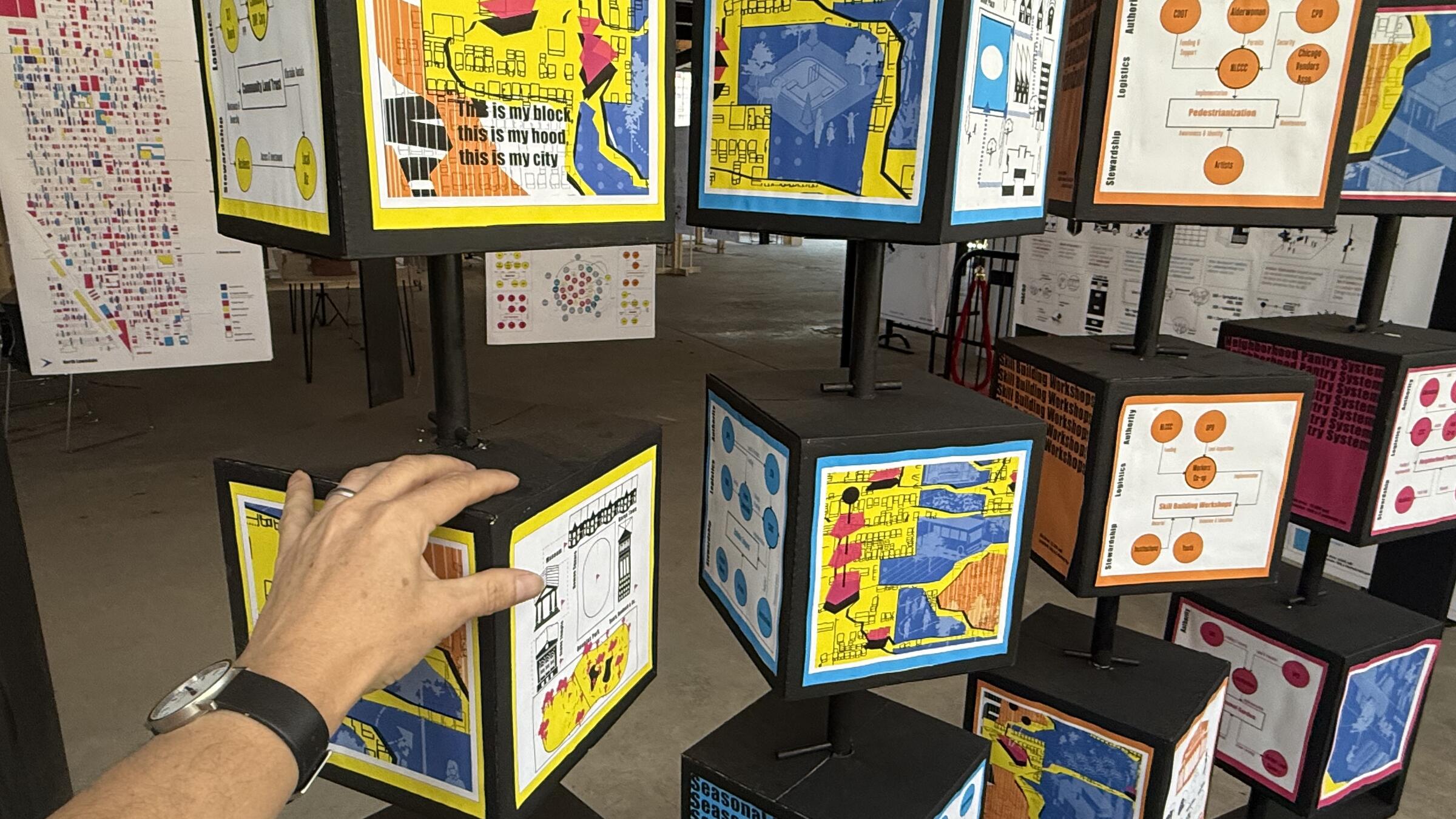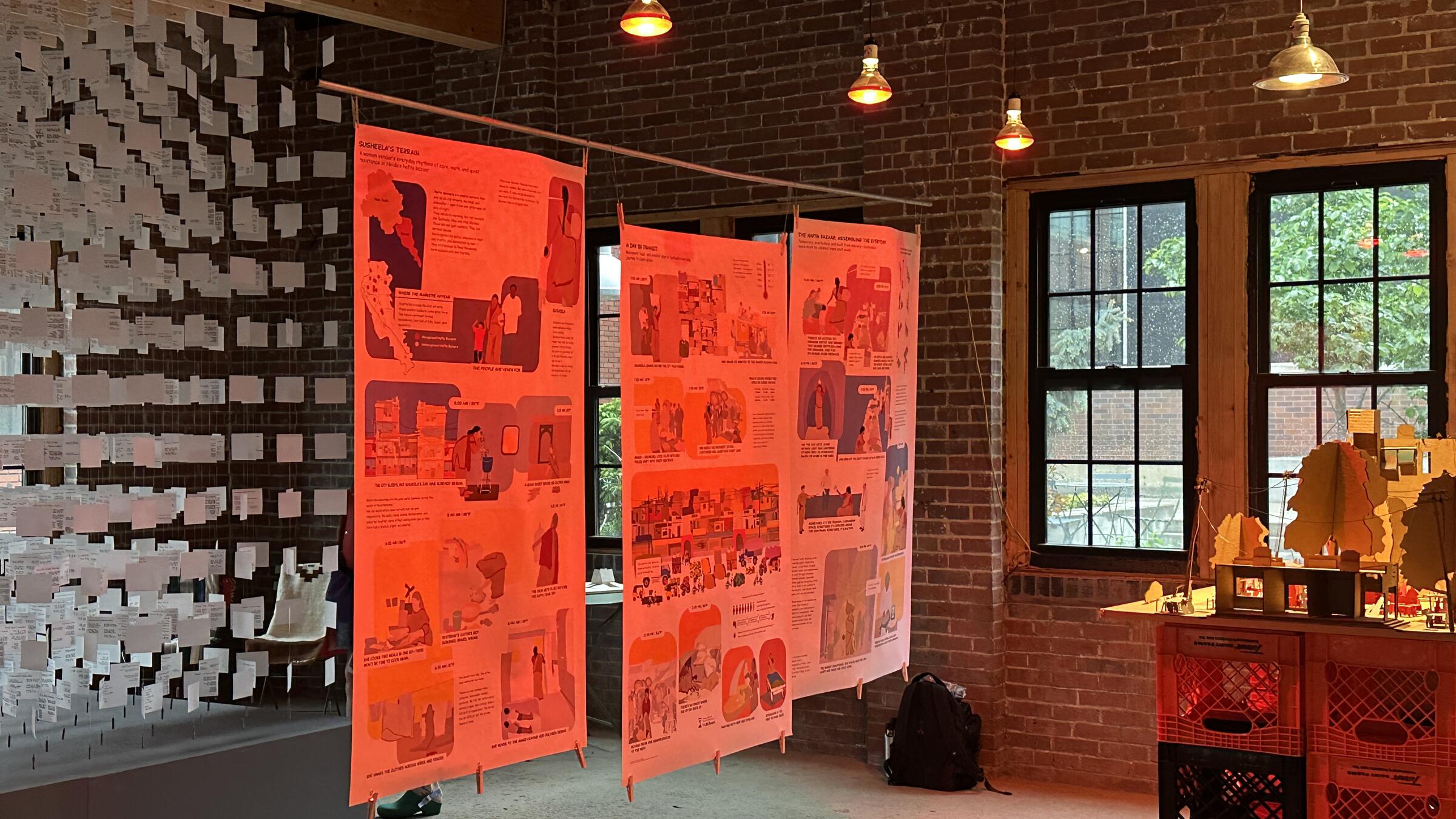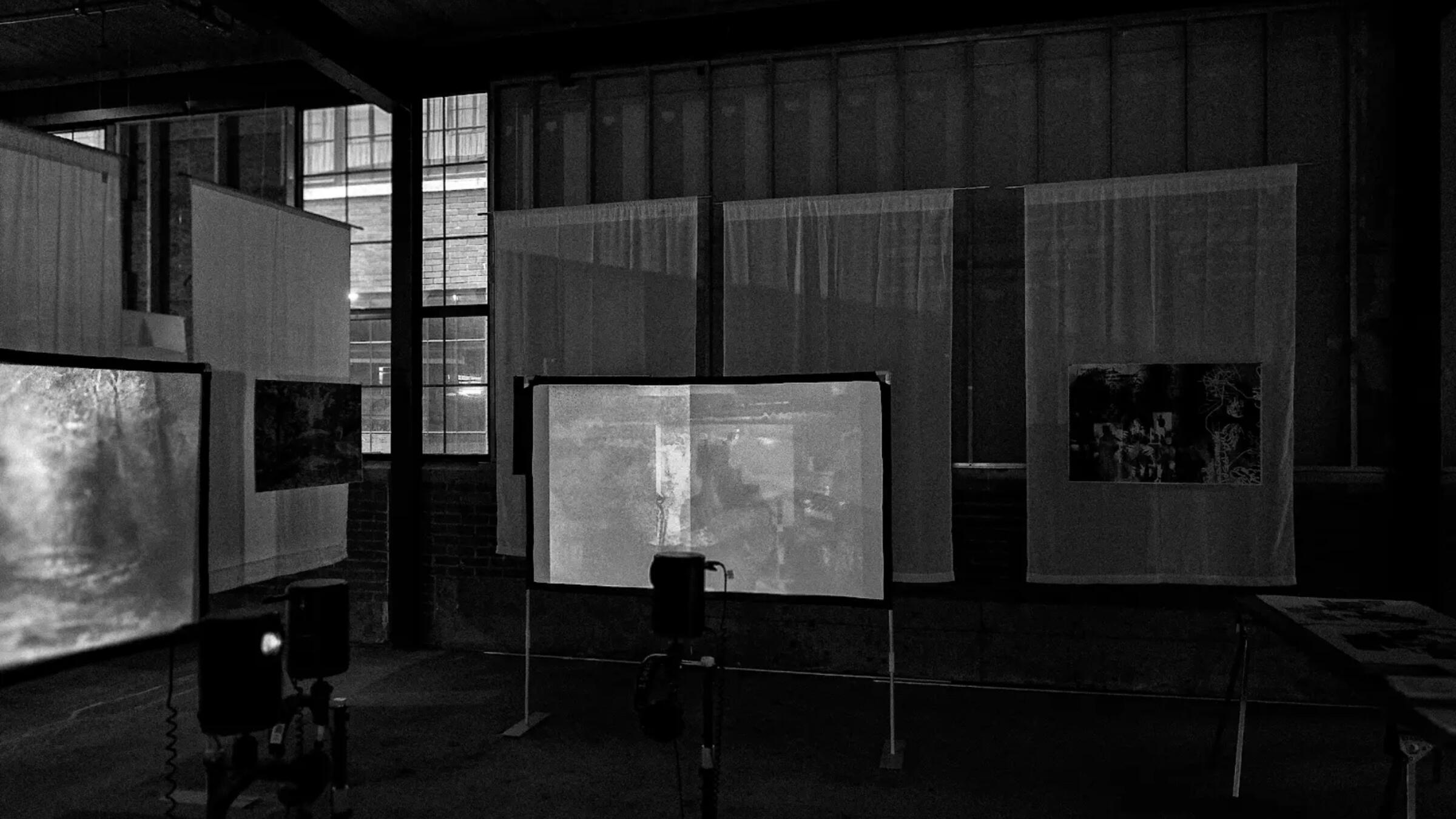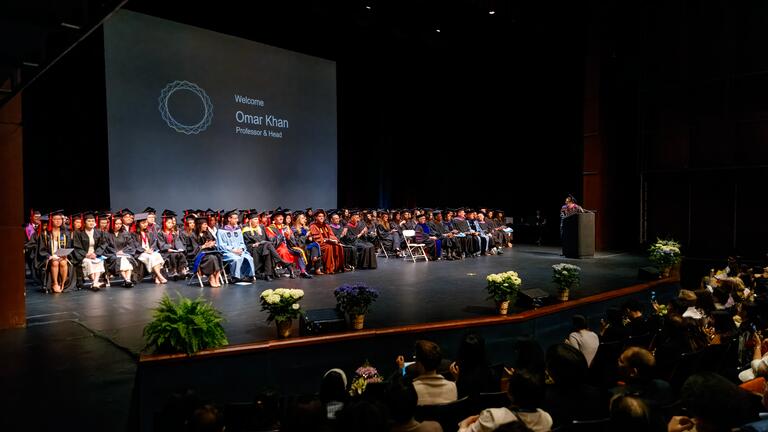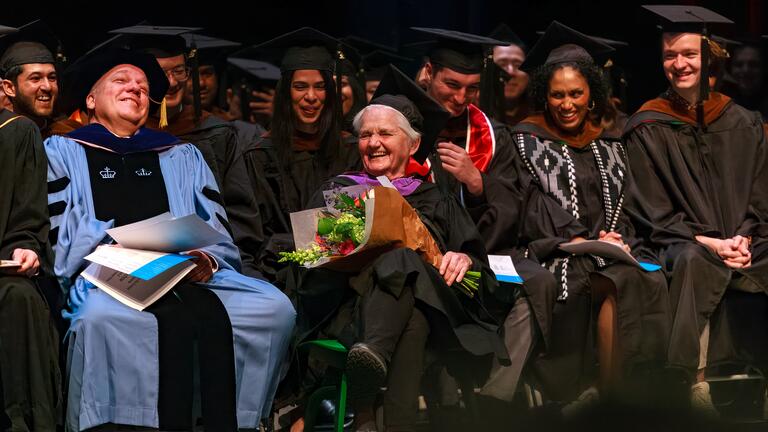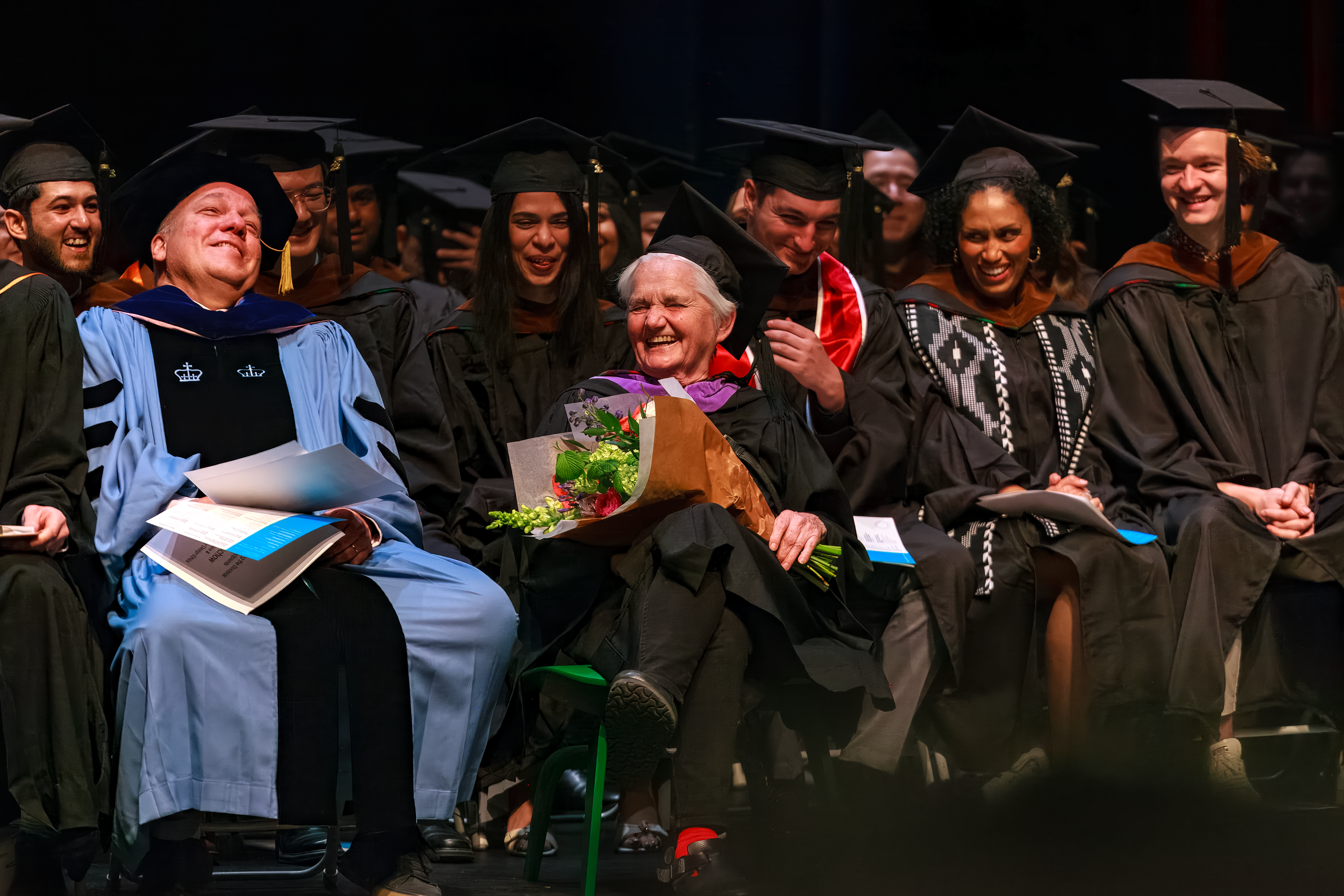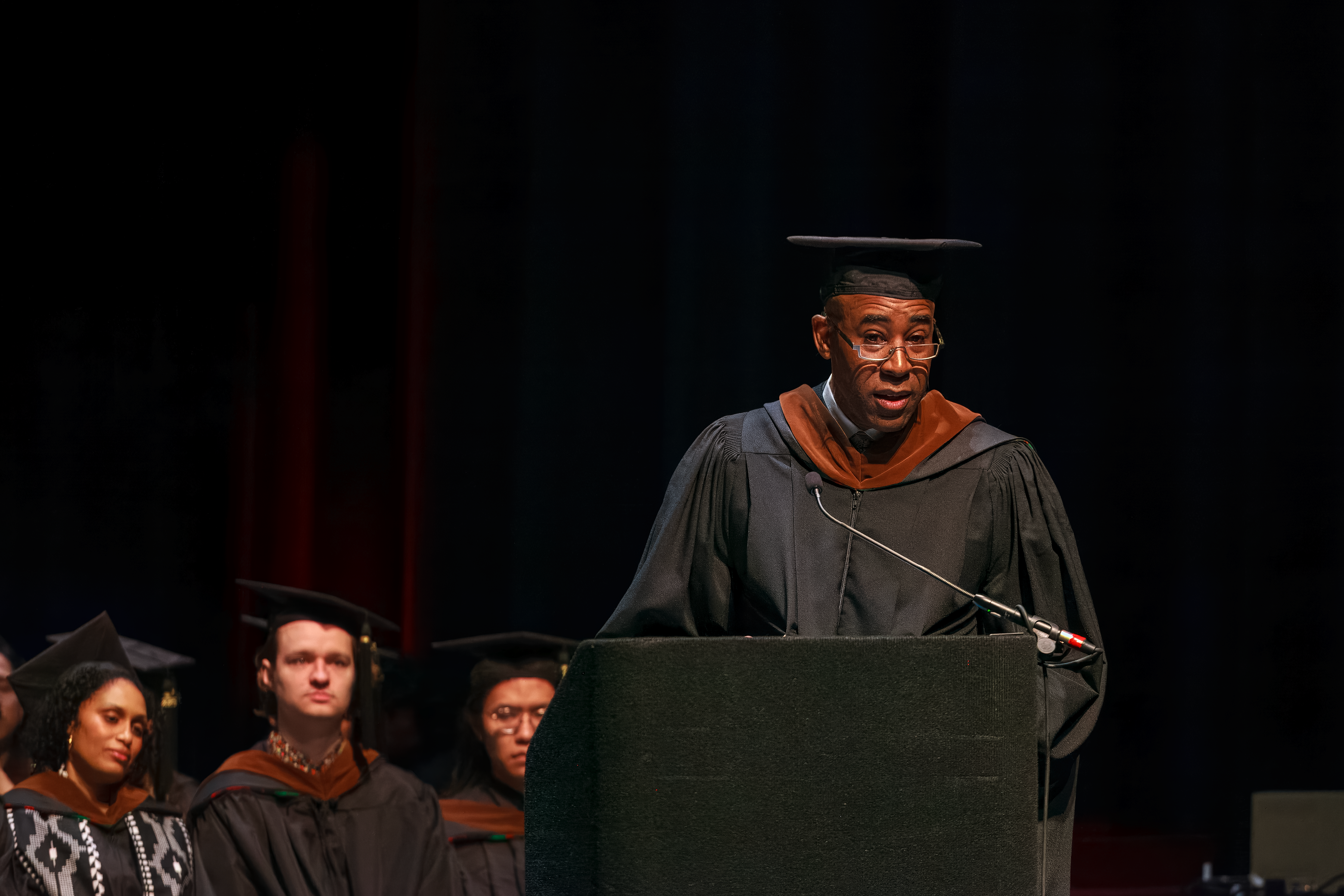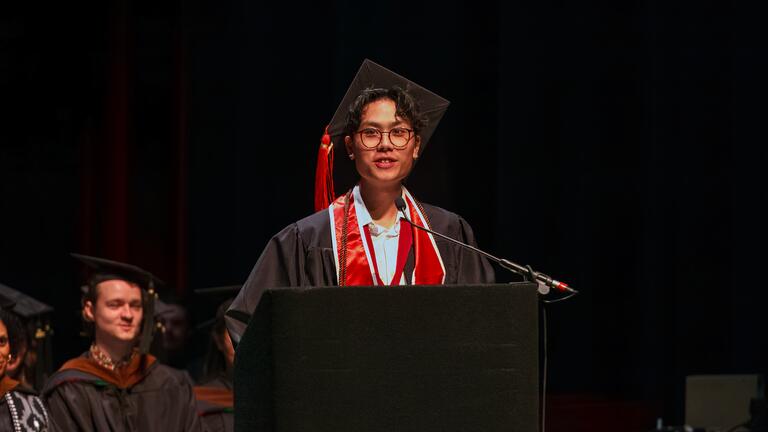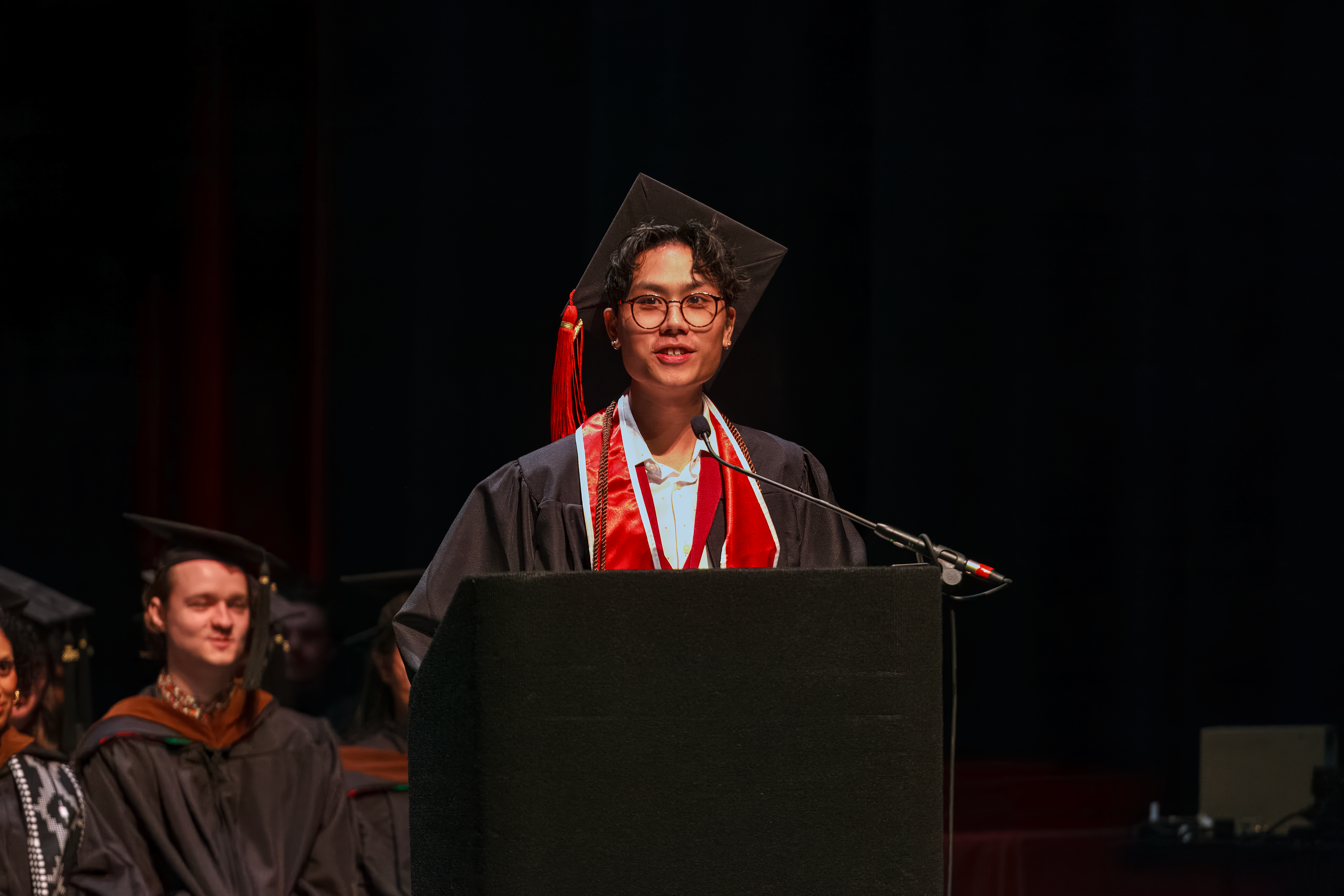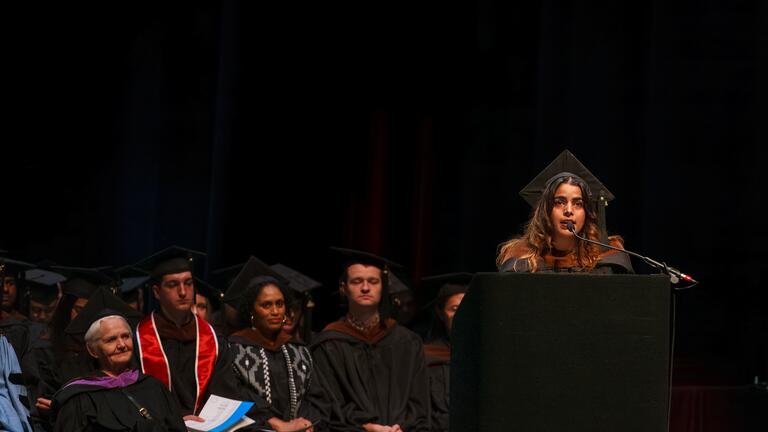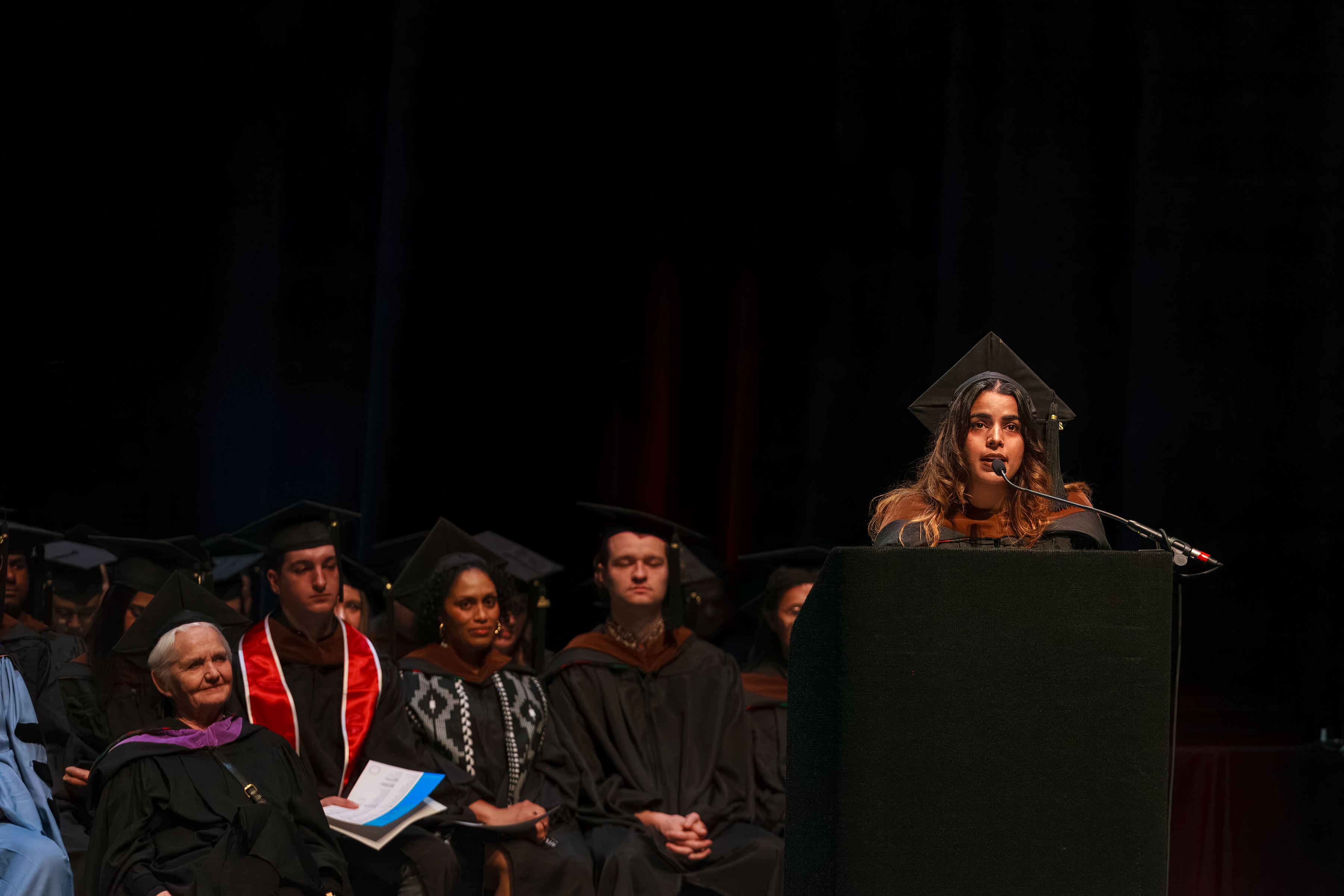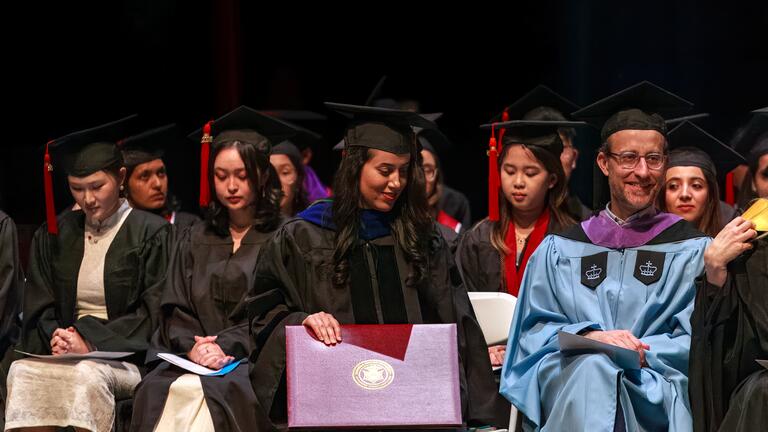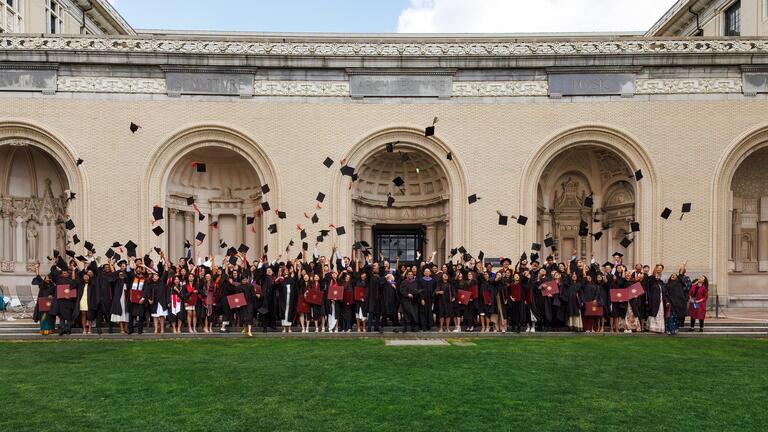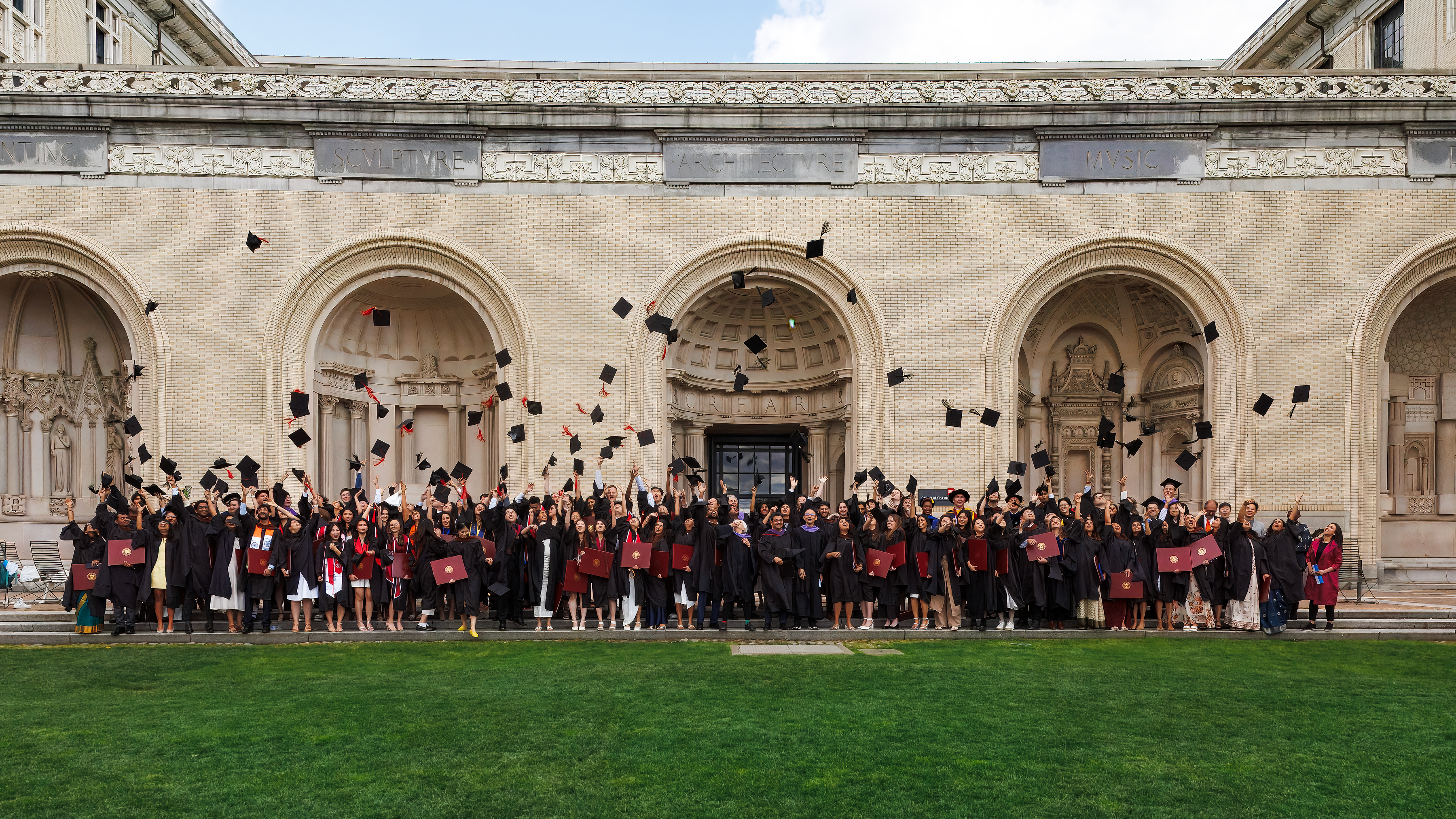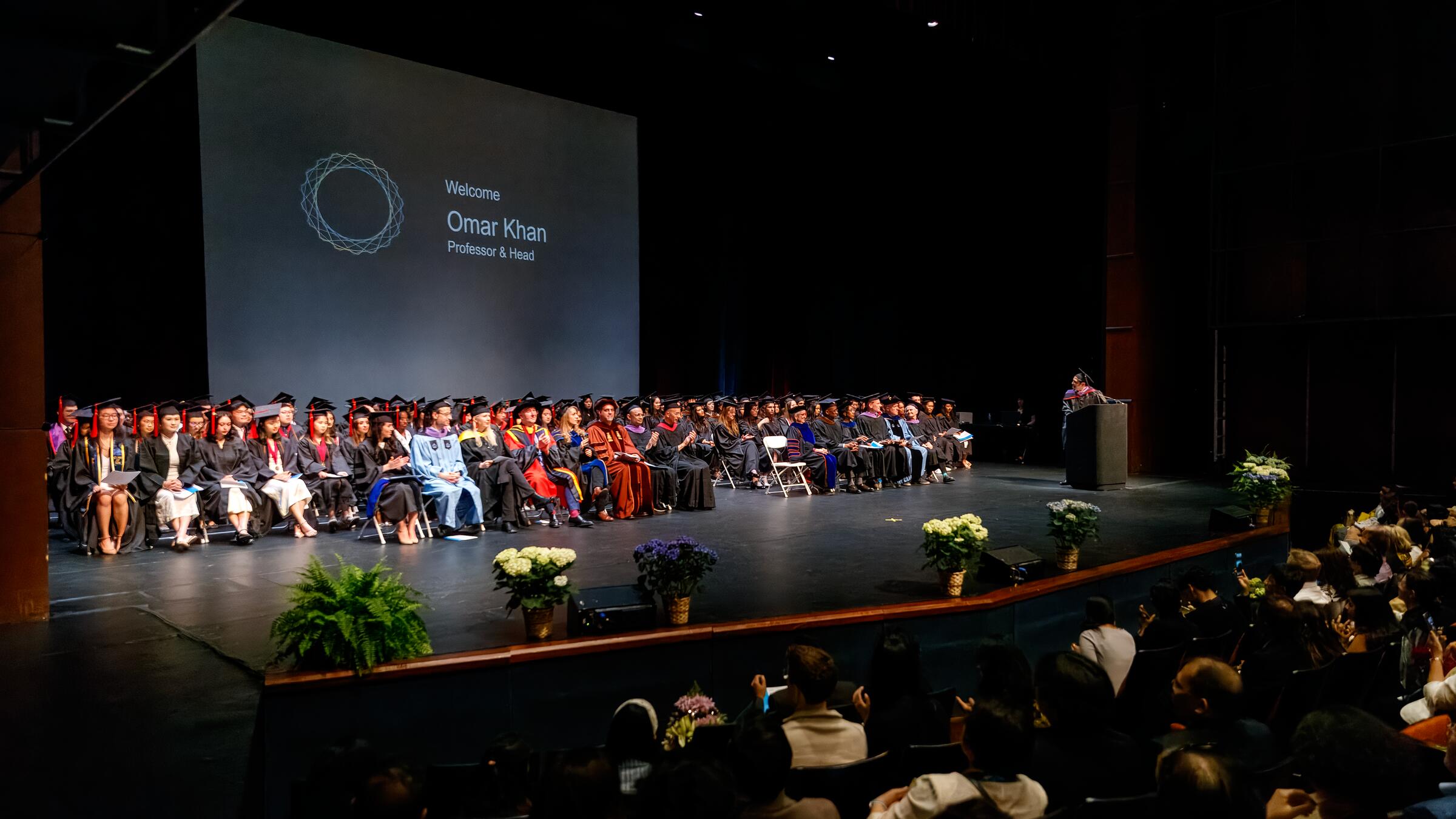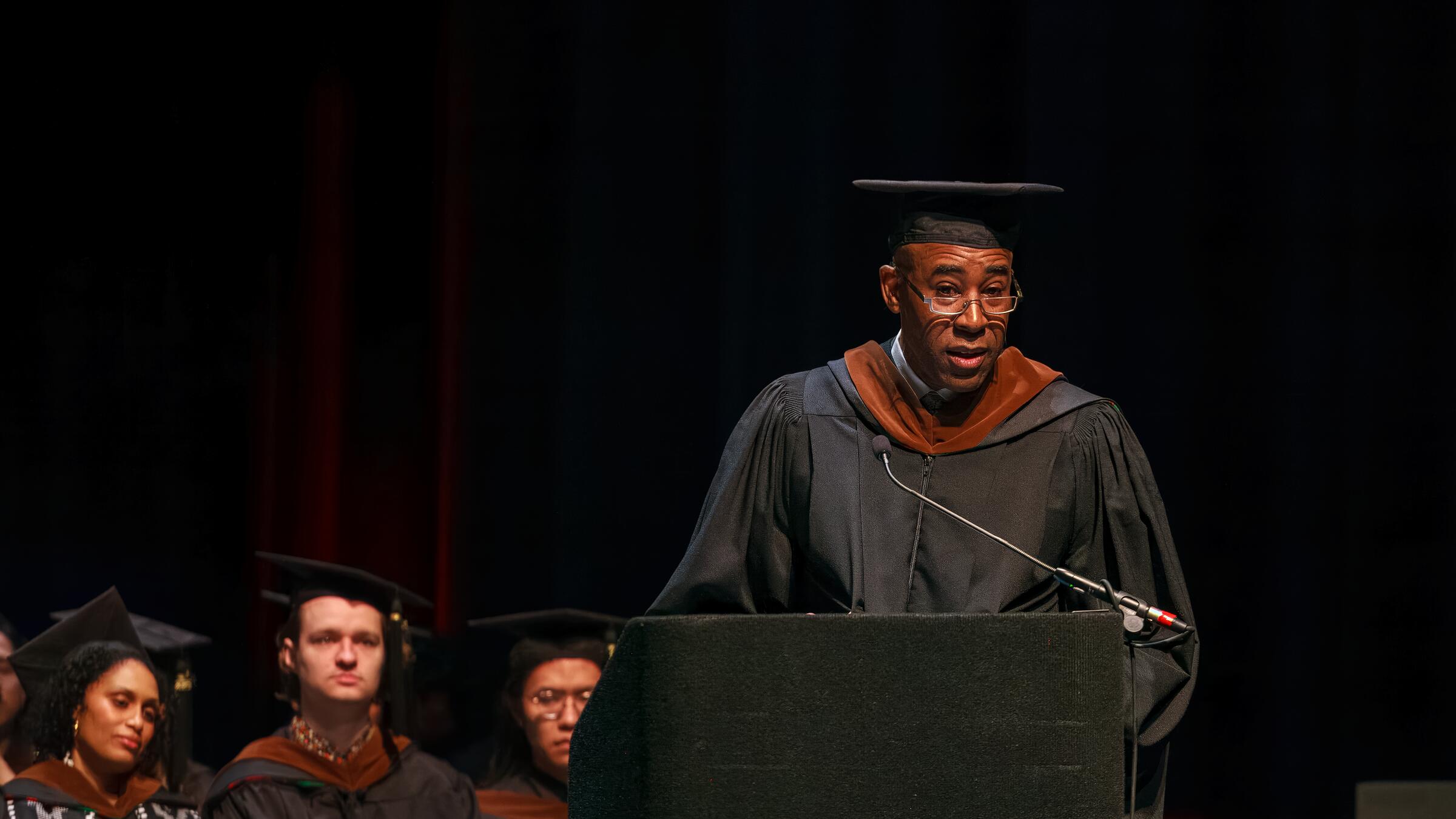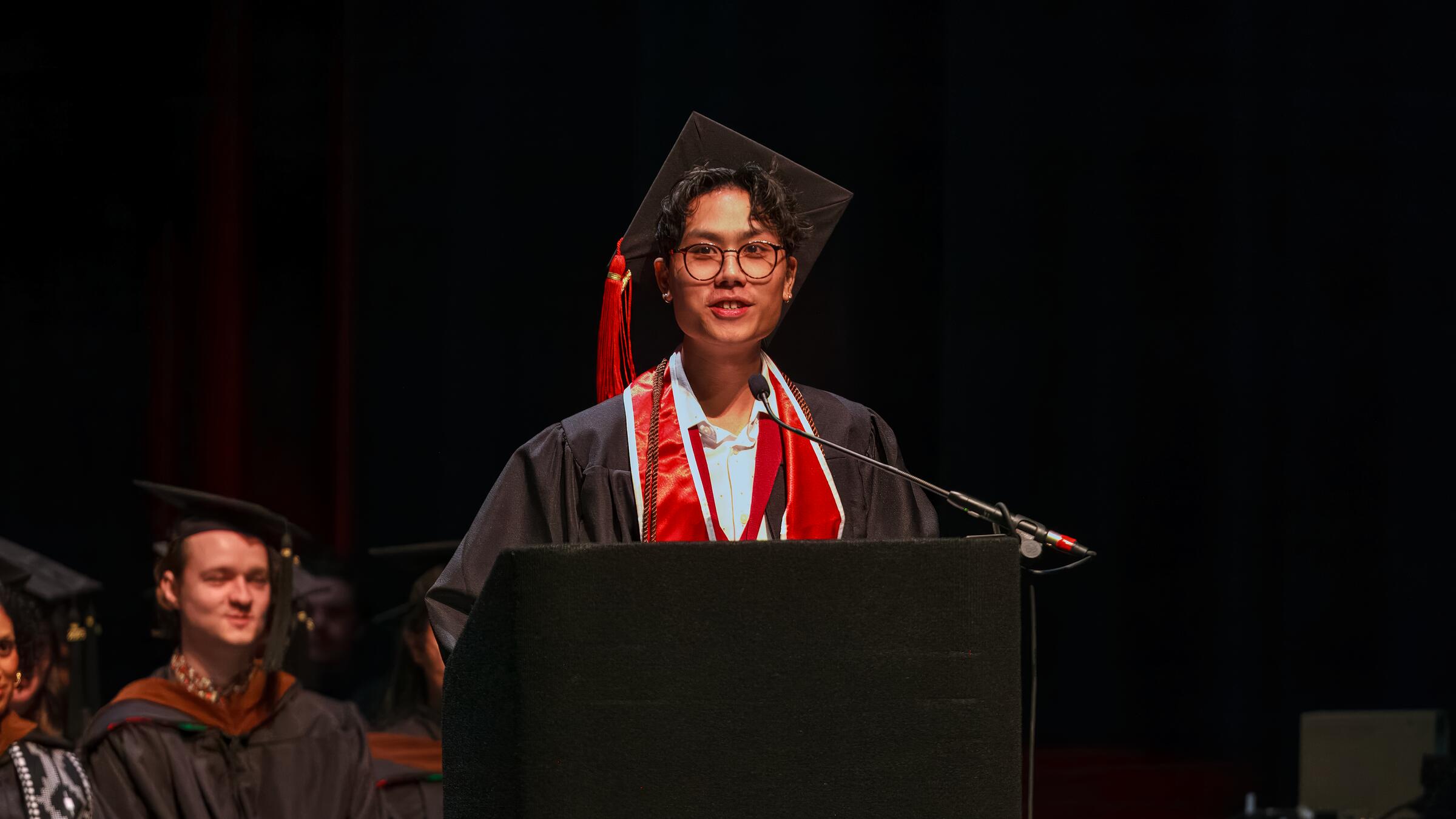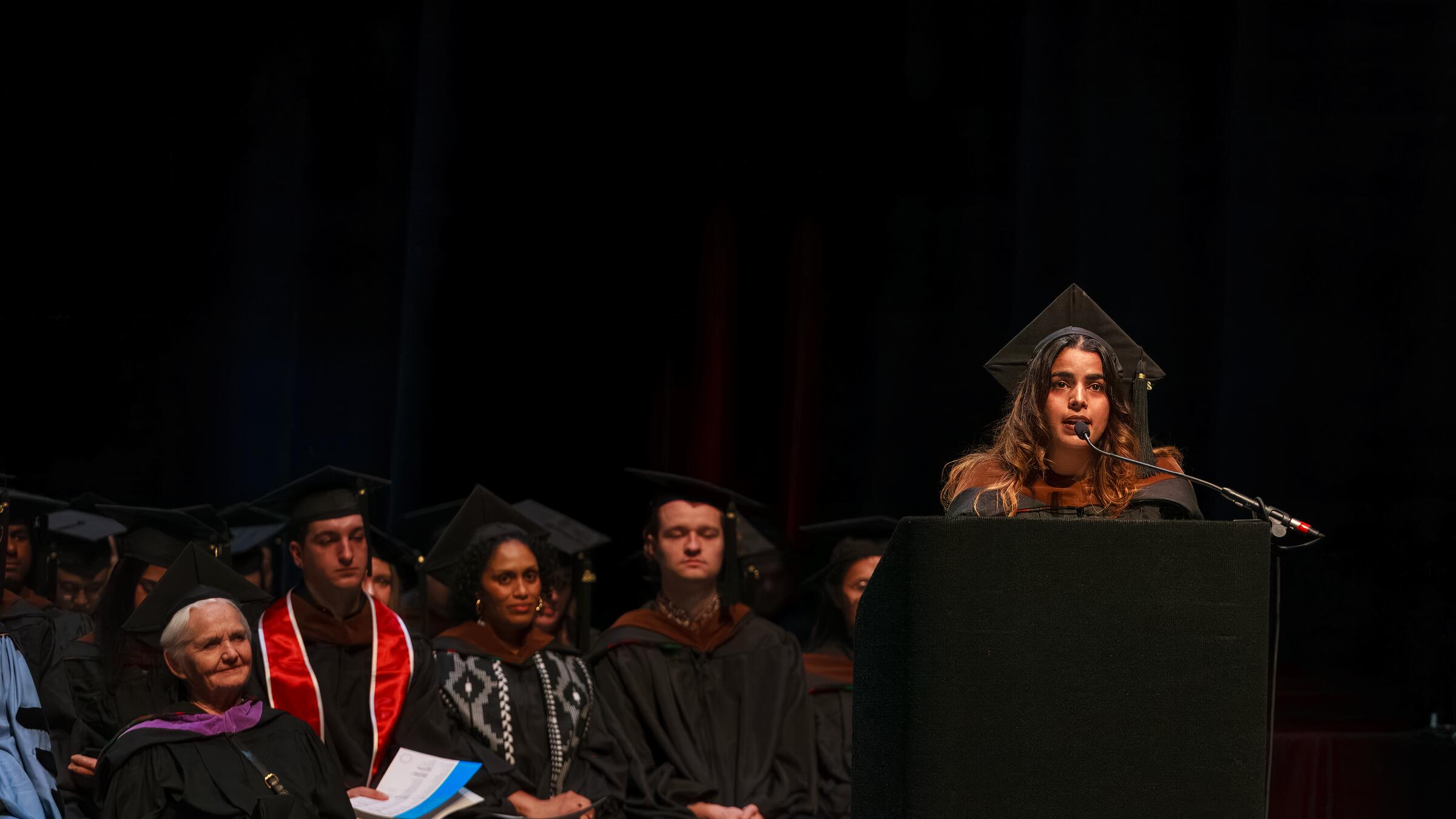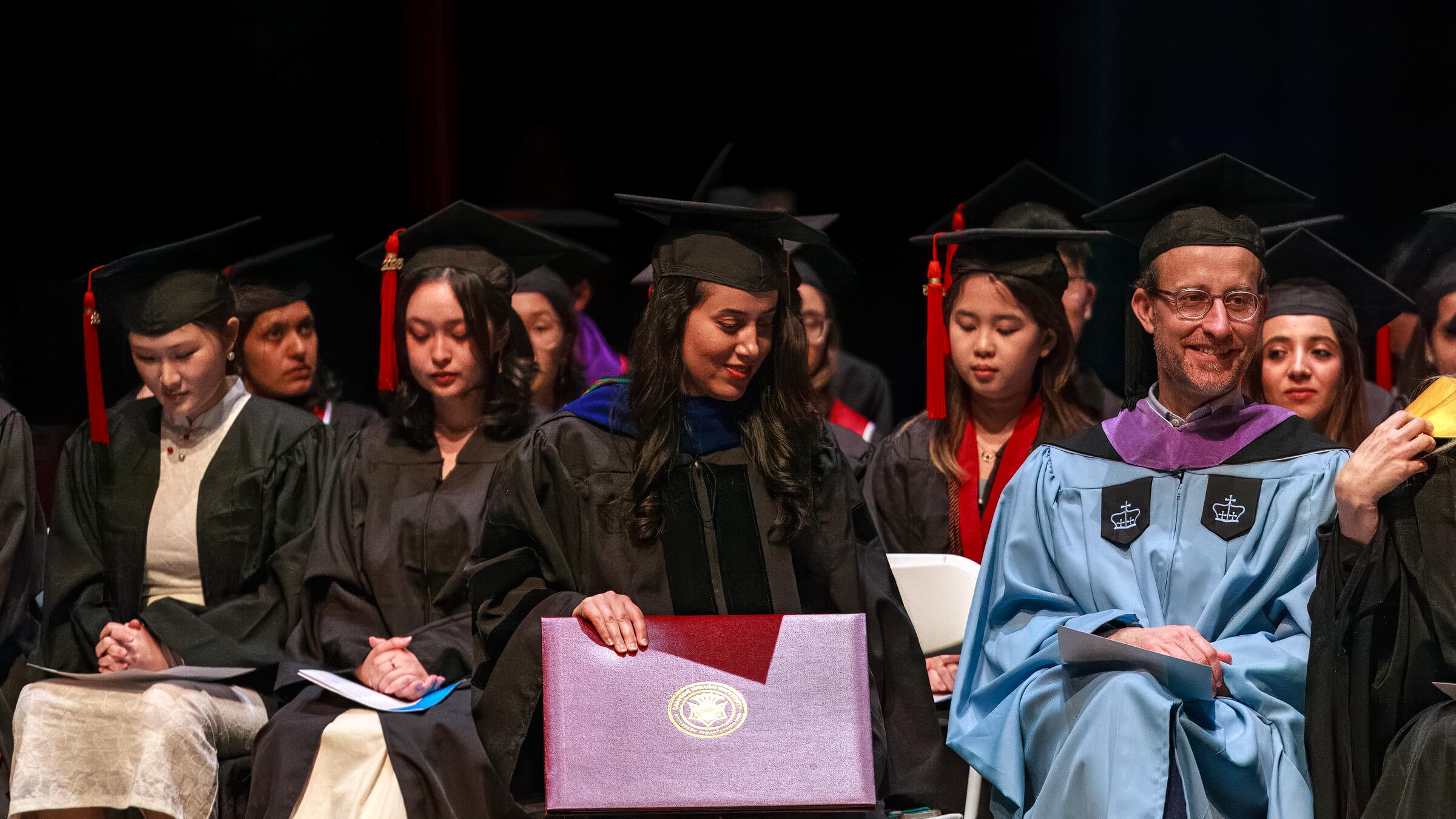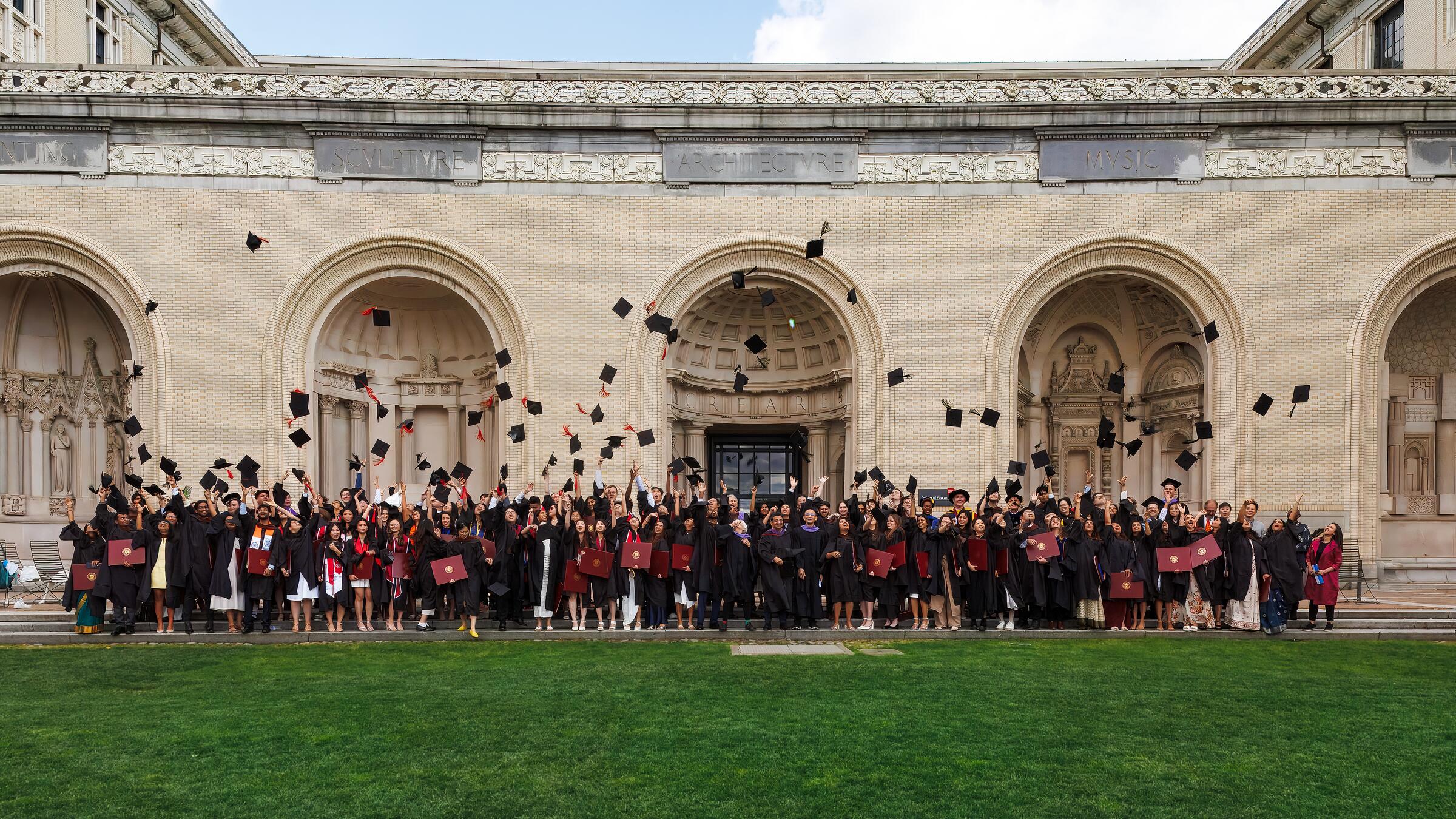e-SPAN Newsletter v039: A celebration of the year
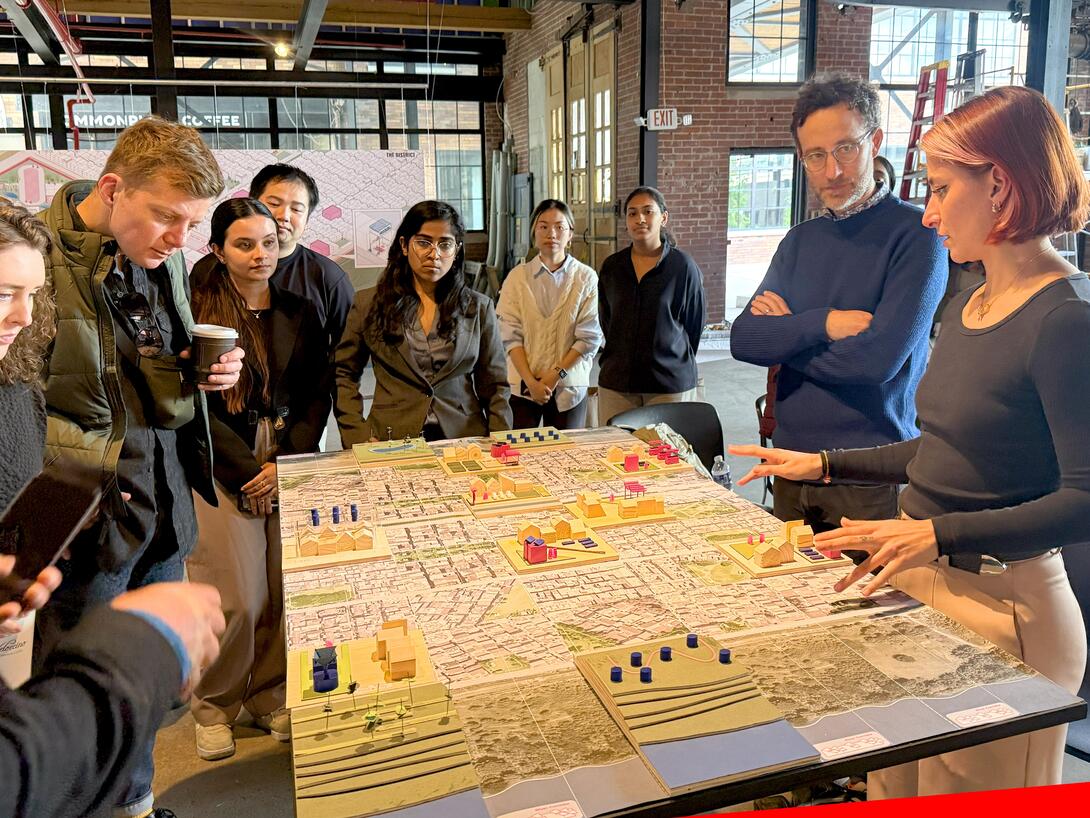
Dear School of Architecture Community,
Congratulations to our Class of 2025 and their families and loved ones on their wonderful achievements!
This year’s 2025 Bachelor of Architecture graduates hold a special significance for me because I started my tenure as the head of school when they began their education at CM–A. Due to the pandemic, we were all remote for that first year. Over the last five years, I have been inspired by how members of this class have handled the challenges thrown at them and developed to be creative and thoughtful designers. They are graduating during a time of uncertainty, but I am convinced of their ability to adapt to difficult circumstances. I look forward to chronicling their achievements in future issues of e-SPAN.
Mary-Lou Arscott, our Associate Head for Design Fundamentals, is retiring after serving the school for 18 years. She has been the welcoming face of our B.Arch program since she started coordinating the first year studio, "Critical Cyborg." In that seminal studio, she laid out a few principles that beautifully reflect her approach to teaching design:
- KEEP YOUR MIND OPEN as there is no right or wrong answer.
- CRAFT, develop practical skills, practice new techniques, respect the
materials, tools, matrix, media and methodologies. - BE INVENTIVE and try to confound conventional default constraints.
- COMMUNICATE through formal composition and in abstract ways. Keep
pace with this by developing skills with visual language and verbal expression. - DEVELOP CRITICALITY, become able and adept at asking good questions.
- PRACTICE FLUENT CYCLING THROUGH TRANSLATIONS from material realm to virtual worlds to drawn propositions.
In this issue you will find an interview that reveals Mary-Lou’s unique journey through construction and craft and back to design. I am sure students will find her unconventional path inspiring and encouraging. We will miss her creativity, candor and mischief as she helped guide the school through its transition over the last five years.
One important achievement of Mary-Lou’s tenure as Associate Head was to promote Thesis as a capstone for the Bachelor of Architecture students. This year’s thesis exhibition was held at Rockwell Park and included the work of our graduating Bachelor of Architecture, Master of Architecture, Master of Advanced Architectural Design, Master of Urban Design and Master of Computational Design students. It was inspirational to see all this diverse work under one roof, expressing the depth and variety of design and research our students are producing.
During Carnival, we were able to meet many alumni returning to campus. This year, we hosted our first International Symposium on Building Performance & Diagnostics. Organized by Suzy Li (PhD-BPD '26) the symposium brought together alumni to share the work that they are doing at their institutions. It demonstrated the impact that the program’s graduates are having at the national labs, research universities and industry. We also welcomed the classes of 1974 and 1975, celebrating their 51st and 50th graduation anniversaries, respectively. It was great to connect with them and show off the school, which has come a long way since they were students.
Finally, a thank you to Rachel Zsembery (B.Arch '00) and Bergmeyer for hosting the Carnegie Mellon Architecture Alumni Reception at this year’s AIA Convention in Boston. Associate Head for Design Research Josh Bard and I enjoyed sharing the school’s recent developments with more than 40 alumni. These important updates included faculty research funded by the PJ Dick Innovation Fund: Faculty Grants Program, new courses we are developing on artificial intelligence and architecture, and our new research space at 6555 Penn Avenue, where we will be able to host our labs and entertain full-scale making. It was lovely to meet so many alumni from many generations and share stories about the past and the exciting future of Carnegie Mellon Architecture.
Thank you all for a wonderful and productive year. I wish you an excellent summer. Please stay in touch — and send us photos of your time at CMU for us to share.
Omar Khan
Head of School
Professor & Head
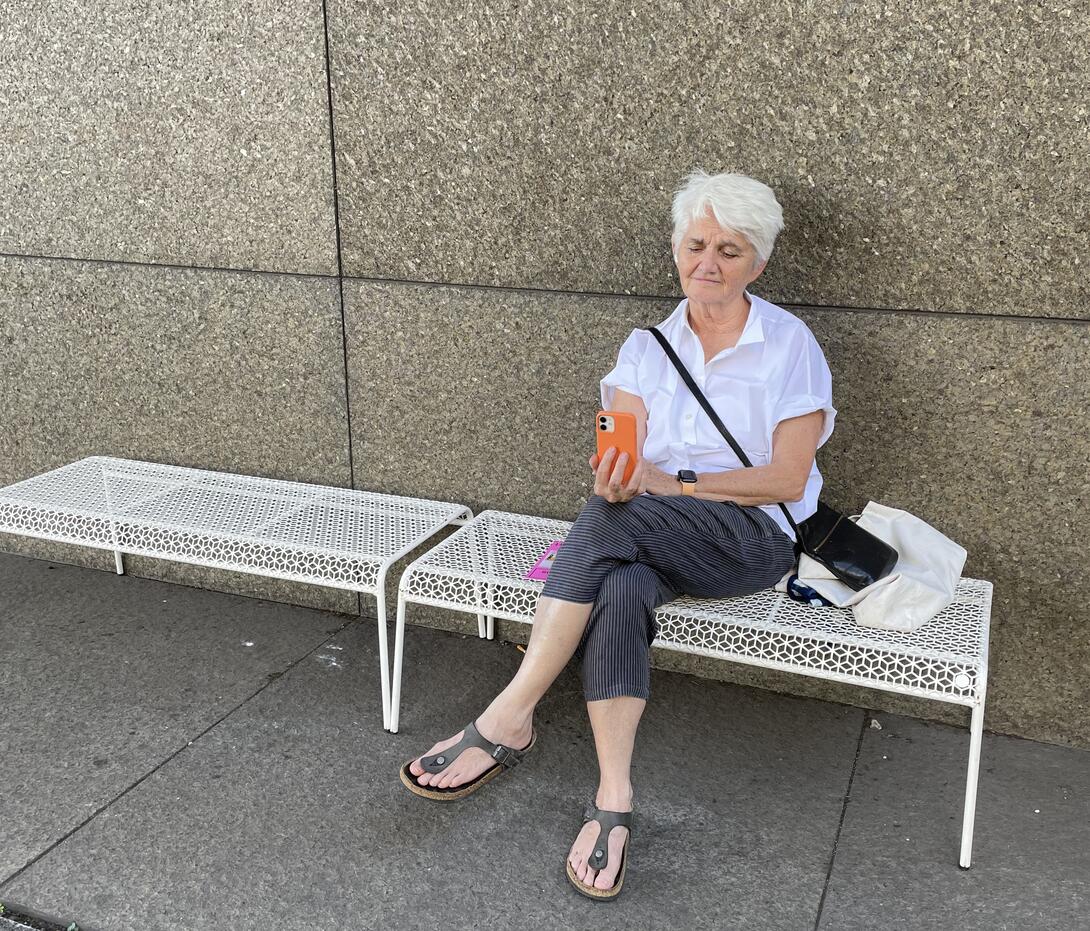
After 18 years with Carnegie Mellon Architecture and four years as associate head for design fundamentals, Associate Studio Professor Mary-Lou Arscott is retiring from Carnegie Mellon. She recently sat down with e-SPAN to describe her "unconventional path" in architecture and construction, emphasizing that no one career or life must adhere to "a script, a strict sequence." The following is a shortened and lightly edited transcript of that conversation.
Here, we’ve interspersed Mary-Lou’s descriptions of (just a few of) her work experiences with excerpts from a brief talk she delivered over Francis Alÿs’ short film "Reel-Unreel" at a now-iconic faculty/staff meeting in February.
The construction process is never far from me. It’s pliable, transforming imagination into fact.
In my architectural training at the AA (Architectural Association School of Architecture in London), I spent most of my time in the wood shop making stuff. Then upon graduation, my friend Susie and I enrolled in a training scheme for apprentices in the U.K. One day a week we went to Hackney Tech, where we learned trades with tradespeople and operated onsite. It completely changed my access to the world of construction.
Afterward I worked nearly a decade in construction before I returned to architecture, and it profoundly changed my understanding of the design process, where so much happens beyond the drawing.
I am interested in the layered and longitudinal talents and imaginations that every human and creature brings to their lives.
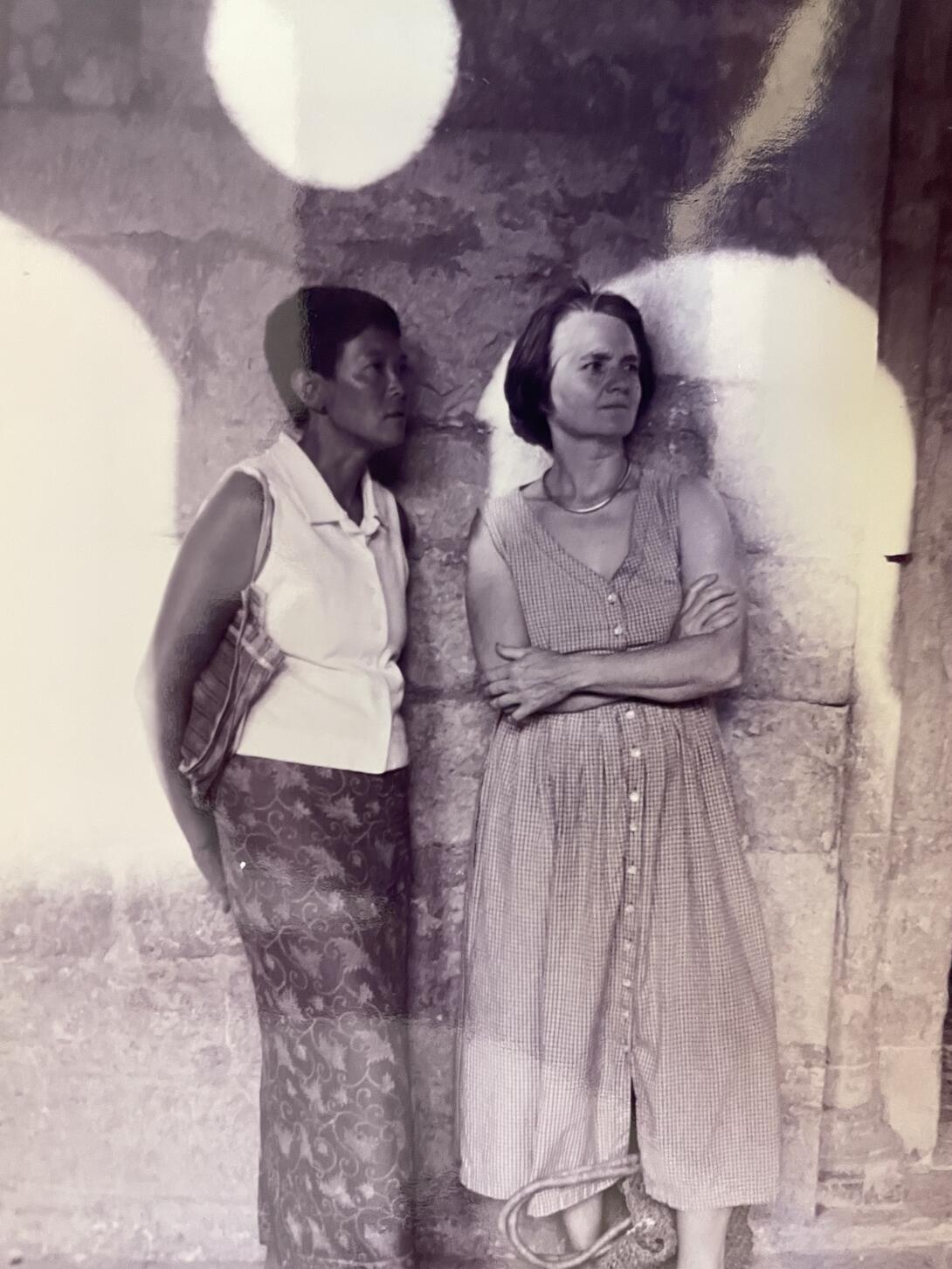
In the 1970s I worked with a line of 12 cabinetmakers who had spent a lifetime making the most beautiful work: post-war repairs of all the Wren churches, the 1930s Senate House, University College London. These white-haired men had been working there since they were 14 and held an understanding of historical detailing in their hands. They were amazing. At tea break we closed our toolboxes and sat on them, and I listened to their stories.
Later I worked for a year or so with a Norwegian cabinetmaker who had grown up in a community where they made their own ropes, they made their own boats, they made their own cloth, they grew the food and caught the fish that they ate. He came to England as a young man during the war and was totally capable and super smart.
He wasn’t at all sure about taking me on as a worker; he’d never had anyone work with him without disaster. He spent the first couple of days so fierce, telling me where everything should go in the workshop, which was the size of a regular car garage. We had to pull all the machines out into the yard to cut anything.
We made interior fittings and tied them to the top of his tiny little van and then drove them through London. We once did an incredibly complicated staircase in a 17th-century building in Smithfield, in the meat market; when we arrived at seven in the morning, the meat cutters were on the street in their bloody aprons, drinking. It was an extraordinary sight, connecting to medieval traditions in the City.
To me it is important to magnify and take seriously the experiences and grain of everyday life.
I was involved in setting up a building trades training center for women in West London, under the arches of the overpass in Ladbroke Grove. At that time there was so little access for women to the building industry. It was a fantastic experience to gather all the women together and decide: What is the curriculum? What are the barriers preventing women from working in the building industry?
We realized it was a matter of cultural attitude, of course, but also: childcare. Before we could open the doors with our machines and tools and trainers standing there ready to receive the women, we had to build a crèche [nursery] in a double porta cabin, because no trainee could come if they had no childcare. So that was built into the proposal: there's childcare, you get paid for being trained, and you find your trade.
The first week was a sort of sampler; the women would have a day with electrics, a day with wood, a day with bricks, a day with plaster, a day with plumbing. At the end of that week, we would consult with each of them: Where would you be happiest? Which trade did you really enjoy most?
That's what you do in art school the first year: you try everything. That kind of engagement with materials is something so personal, almost visceral.
It’s true of architects, as well. When I was doing the "Critical Cyborg" studio with first-year, first-semester students at Carnegie Mellon, the very first thing students did was to make freehand marks on paper. And then, each first-year was given 15 pounds of clay and told: You cannot use the elevator. You have to walk up three floors, you have to feel the weight of your 15 pounds, you have to be responsible for it for a month, and you must keep it pliable, because you have to make it continuously transform. There were a lot of complaints — they’ve got dust in their lungs, they've got fingernails breaking — but it was all a part of actually understanding: What is your body in relation to this material?
Everyone is undergoing transformation, building their understanding, skill and capabilities.
After working in construction for nearly 10 years, I felt that I needed to balance building with designing, so I went to the architect I’d worked for in high school, tidying and making coffee, and asked for a job. Their office was in Parliament Street, and they were extending the offices of the Palace of Westminster into an entire block of buildings in Whitehall.
Each team of architects worked with a different building, and I was given one built in phases from 1720 to 1745. The material story was extraordinary and intact, but it had been occupied by the Ministry of Fisheries and Agriculture for a century, and they’d just painted everything green.
So, we had to carry out historic detective work — such fun — and we brought in every kind of specialist: historians; engineers; craftspeople to reattach the English Renaissance plasterwork or to repair the Chinoiserie staircase. Our office was next door to the building, so I spent all my time running around measuring and trying to make the whole project make sense.
Historic work is technically riveting, but eventually I needed to find balance again with contemporary design. I joined a generous, inclusive practice that I really admired, where every worker became a director after a year’s trial. It was an experiment in cooperative practice, where everyone helped direct the organization, whether they were 24 or 64.
And even young architects worked with the client, from first consultation right the way through to the project’s being built. It wasn't the conventional split, with some people drawing bathroom details in the corner whilst others went to the meetings: the team was the team, and you worked through the job from beginning to end.
The process of making requires the whole person and every body and every material; it includes the person who delivers the piece of glass as well as the window.
I’m most interested in how the process of making transforms the result — through the people, through the material, through an insight into the nature of the place.
There’s a superb and supreme skill in every stage of it.
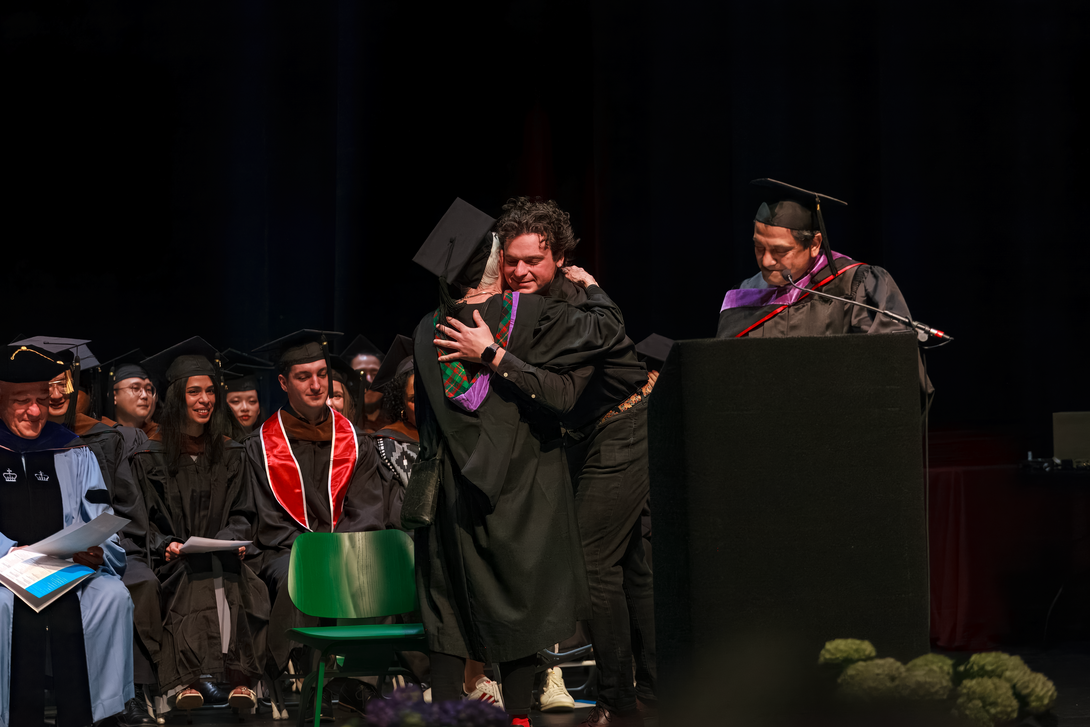
Inscribed Matter + Commoning the City Thesis Exhibition
This year’s thesis exhibition, collectively titled "Inscribed Matter + Commoning the City," included an impressive array of installations and projects that showcase the work of B.Arch, M.Arch, MAAD and MUD students at the school. "Inscribed Matter" included work from B.Arch, M.Arch and MAAD students and was coordinated by Mary-Lou Arscott, Maryam Karimi and Tuliza Sindi; "Commoning the City" included work from MUD students and was coordinated by Stefan Gruber and Jonathan Kline. Also on display was work from ASO studios with Gerard Damiani and Heather Bizon; Poiesis III with Laura Garófalo; and Options with Vicky Achnani.
The exhibition opened at Rockwell Park on Monday, May 2 and final reviews took place on Monday, May 5. View a selection of the projects below and read more about them in the thesis catalogue.
Congratulations to our 2025 CM-A Graduates!
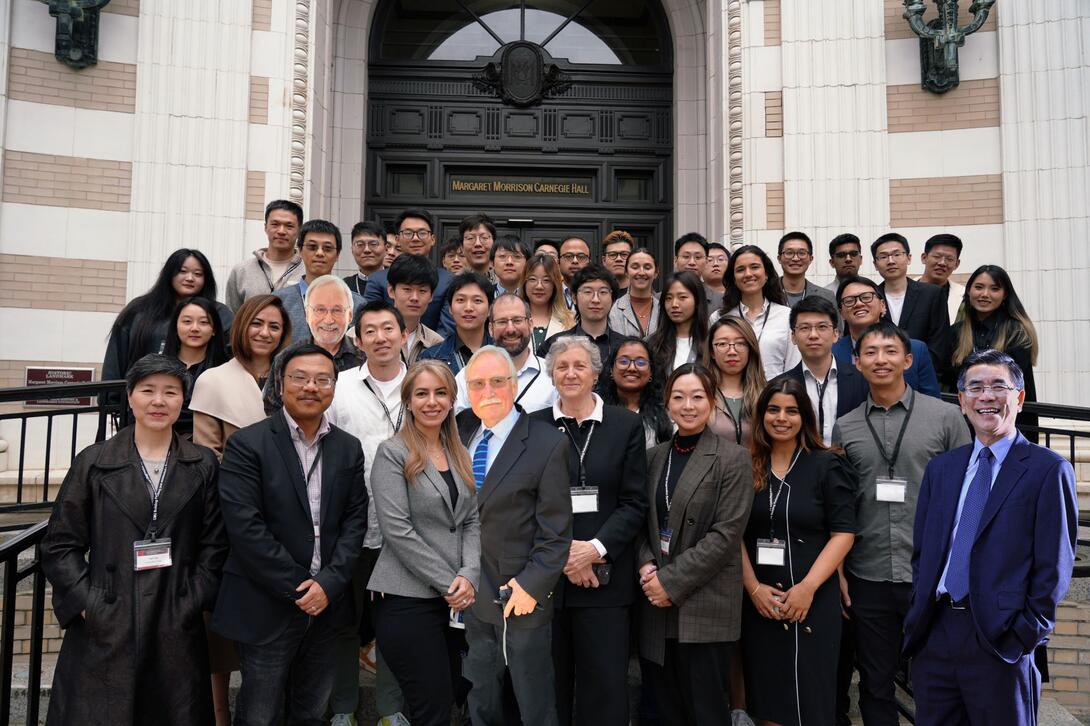
The Inaugural International Symposium on Building Performance & Diagnostics
The first ever International Symposium on Building Performance & Diagnostics took place at CMU on Friday, April 4, 2025. Suzy Li, PhD in Building Performance & Diagnostics candidate at Carnegie Mellon Architecture, was part of the planning team for the event. Speakers at the symposium included Vivian Loftness, University Professor and former head of school, and Volker Hartkopf, Professor Emeritus with Carnegie Mellon Architecture and former Director of the Center for Building Performance and Diagnostics (CBPD).
The symposium, which took place in the Robert L. Preger Intelligent Workplace, was a great success and included 15 PhD graduates, 12 alumni and eight current graduate students, along with faculty and students connected to PhD alumni.
Call for alumni photos:
We plan to include photographs of life at the school throughout the years in upcoming editions of e-SPAN. If you have images from your time at Carnegie Mellon Architecture, please share them with us!
When you send your photos, please try to include your graduation year and the name(s) of people in the photos.
Alumni News & Updates
We invite all Carnegie Mellon Architecture alumni to keep us up to date on their awards, professional milestones and more. Send us your updates with a brief description and link to more information.
- The AIA has elevated Arathi Gowda, FAIA, AICP, LFA, LEED AP BD+C (B.Arch ’02), Principal at ZGF Architects, to the College of Fellows. This honor is awarded to architects for their exceptional work and significant contributions to the architecture profession and society. New Fellows were honored at the AIA Conference on Architecture & Design (AIA25) this week in Boston.
- Alyssa (Mayorga) Mitchell, AIA, NOMA (B.Arch ’20, MSAECM ’21), Project Architect at Weber Thomspon, and Madeline Cotton, LEED GA (B.Arch ’23), Architectural Designer and Design Computation Lead at NBBJ Seattle, have been selected for the Arch30 Seattle cohort hosted by Metropolis Magazine. Arch30 Seattle, an initiative that recognizes emerging leaders in architecture under the age of 35, convened for an exclusive gathering, fostering connections and providing valuable insights.
- Paulina Reyes, RA, NOMA, LEED GA (B.Arch ’14), Founder & Principal at Prospect-Works, has been featured in "Voyage" as a hidden gem of Michigan small businesses. Founded in 2023, Prospect-Works is a mission-based architecture and design practice based in Detroit with an ethos built around social impact, sustainability and youth empowerment.
- The Master Builders Association of Western PA awarded MCF Architecture a 2024 Building Excellence Award in the New Construction Over $50 Million category for the University of Pittsburgh School of Medicine’s Scaife Hall Addition. This honor follows an AIA Pittsburgh award received last year. The design team included a number of alumni: Tim Powers, RA (B.Arch ’80), MCF President; George Marsh (B.Arch ’79), Principal at Payette; Gary Moshier, AIA, LEED AP, CPHD (B.Arch ’80), Partner at Moshier Studio; and Cherie Moshier, AIA (B.Arch ’82), Architect and Managing Partner at Moshier Studio.
- Jordan Luther, AIAS, Assoc. AIA, NOMA (M.Arch ’23), who currently serves as AIA Pittsburgh YAF Vice Chair and AIAS President, joined Architectural Record's DESIGN:ED podcast to discuss bridging the gap from school to practice, how young architects can advocate for themselves early in their careers, and how AIAS is helping students positively contribute to the profession.
- Samantha Hill (B.Arch ’06), CEO and founder of the architecture and development firm Design With Skill, was named to the 2025 Inc. Female Founders 500. This list highlights dynamic women entrepreneurs in the U.S., including Kim Kardashian and Gwyneth Paltrow.
